Service objectives
The following list represents the Key Service Objectives (KSO) for the Appleton Greene Energy Management service.

Energy efficiency
The cost of used energy sometimes is considerable part of the total cost of organization. It requires monitoring, measuring and control in order is kept in certain limits. Improved efficiency is an important topic in modern industries, facilities, city environments. Energy efficiency is a comparison between two or more situations, and it is constantly improving following the constant technological developments. The energy – water, air (compressed), oil & gas, electricity, heating & cooling, steam and their demand management require data collection & processing, bench marking and improvement plan. If in a building there is an installed Energy Management system, data gathering is a possible task. The information will be compared with the industry standards and improvements will be applied, some of them to be implemented immediately, others require investment decision. The initial walk-in premises’ inspection would induce short term improvements, with up to 25 % reduction of energy consumption, in a period of the first weeks of implementation. Reducing the demand is not always energy efficiency, because the national and international norms of the working environment shall be taken in consideration – climate, light, etc. The short term measures would be – usage of natural ventilation and natural light, instead of only the artificial ones; change of set point, ducts and filter cleaning of HVAC system; LED lighting; electrical power quality, motor controls and improved maintenance. Improvements that require investment decision would bring the improvement of energy efficiency to more than 50 %, including new chiller, lighting system, efficient motors or building envelop. If only Building automation is installed savings go to 22%. Some of those investments have pay-back period of more than a year, but positive results are coming immediately after installation. In case of missing Energy Management system, such will be considered by top management. The investment decisions will be scheduled after creation of an Energy Management process and system. Demand improvement measures, as avoiding the peaks in demand, or work time shifting, are giving visible measurable results, by changing only the price of electricity or gas in the cost estimation sheet. Other measures with visible and quick improvement results are in the supply side of the energy – different tariffs, energy suppliers, changing the primary energy supply as per local conditions. Exact calculation of return of investment is not possible, since the benefits from integration provides additional services and improves the existing ones. It can be considered generally that 10 % reduction of the maintenance cost is possible. I will support the decision with my experience in similar entities. There will be surveys done frequently among employees or clients and the opinions shall be taken into consideration for a fine tuning of the integration, or even general changes of the approach. By the energy efficiency attained in a short time, the company will enjoy a reduction of the cost of organization or in the cost of the delivered products.

Building integration
The cost of used energy sometimes is considerable part of the total cost of organization. It requires monitoring, measuring and control in order is kept in certain limits. Improved efficiency is an important topic in modern industries, facilities, city environments. Energy efficiency is a comparison between two or more situations, and it is constantly improving following the constant technological developments. The energy – water, air (compressed), oil & gas, electricity, heating & cooling, steam and their demand management require data collection & processing, bench-marking and improvement plan. If in a building there is an installed Energy Management system, data gathering is a possible task. The information will be compared with the industry standards and improvements will be applied, some of them to be implemented immediately, others require investment decision. The initial walk-in premises’ inspection would induce short term improvements, with up to 25 % reduction of energy consumption, in a period of the first weeks of implementation. Reducing the demand is not always energy efficiency, because the national and international norms of the working environment shall be taken in consideration – climate, light, etc. The short term measures would be – usage of natural ventilation and natural light, instead of only the artificial ones; change of set point, ducts and filter cleaning of HVAC system; LED lighting; electrical power quality, motor controls and improved maintenance. Improvements that require investment decision would bring the improvement of energy efficiency to more than 50 %, including new chiller, lighting system, efficient motors or building envelop. If only Building automation is installed savings go to 22 %. Some of those investments have pay-back period of more than a year, but positive results are coming immediately after installation. In case of missing Energy Management system, such will be considered by top management. The investment decisions will be scheduled after creation of an Energy Management process and system. Demand improvement measures, as avoiding the peaks in demand, or work time shifting, are giving visible measurable results, by changing only the price of electricity or gas in the cost estimation sheet. Other measures with visible and quick improvement results are in the supply side of the energy – different tariffs, energy suppliers, changing the primary energy supply as per local conditions. Exact calculation of return of investment is not possible, since the benefits from integration provides additional services and improves the existing ones. It can be considered generally that 10 % reduction of the maintenance cost is possible. I will support the decision with my experience in similar entities. There will be surveys done frequently among employees or clients and the opinions shall be taken into consideration for a fine tuning of the integration, or even general changes of the approach. By the energy efficiency attained in a short time, the company will enjoy a reduction of the cost of organization or in the cost of the delivered products.

CO2 reduction
The objective of CO2 reduction in power usage for company activities is becoming an important business issue in many parts of the world. It is possible in two ways – reduction of the energy consumption and/or renewable energy usage. The reduction of the energy consumption shall be done in a way, which does not affect negatively the production activities or business life of the company as the norms of the working environment shall be taken in consideration. Energy efficiency through creating an Energy Management system, improvement of power quality, demand management, supply improvement, installation of new equipment, systems’ integration, leads to reducing the ratio of CO2 gases in the provided services. Initially a calculation will be done – what is the production of CO2 gases, from power consumption – hourly, daily, monthly, seasonally, annually and 3 –year period. In case of recently installed Energy Management system, the comparison will be done based on before and after installation. If only Building automation is installed savings go to 22 %, which is translated in reduction of CO2 emissions to about 8-13%. The objectives energy efficiency, systems integration, improved facility and asset management, reduced spares stock, less nuisance alarms and even better business partnering with suppliers and clients, shall be translated to a total reduced CO2. That means all above measures, or at least most of them shall be taken, in order positive results of above 50 % are available. A reduction of CO2 emissions can be done by shifting the supply to renewable energy resources, by installation of any of those technologies nearby, or purchase on the open market. In some countries purchasing directly the power of a wind park for example, situated far from the entity is a viable and attractive opportunity, for companies that are trying to reduce their carbon footprint. Installation of own renewable utility is nowadays very much attractive, viable and giving good results’ in emission reduction development. The pay-back of investment is supported by the subsidies from government and by gradually reducing prices of the equipment. The roof top solar installation is a good solution, as it is better shade protected and doesn’t need additional space. The total power of electrical and gas facilities installed and time demand of the entity will be matched with the solar capacity. When necessary, additional power supply and storage can be provided from local or national grid. In case the capacity of the solar installation is covering all demand of the entity, the result of CO2 reduction will be very close to highest possible percentage. It can’t be 100 %, because the products, the installation work also produce some CO2 emissions and shall be taken into consideration in the total project calculation. There is a certain similarity with installation of wind park, although the investment’ pay-back is longer. There will be surveys done frequently among employees or clients and the opinions shall be taken into consideration for improvement measures, or even general changes of the approach.

Traffic control
City traffic is a big consumer of energy and strong generator of CO2 emissions. A proper control applied will bring improvements for city authorities, but also for the citizens and tourists. Applying controlling measures depend on the size of the city and many other factors. One of the main issues in cities is the parking. Sometimes cars do unnecessary driving, in order to find a place to park. Signboards will be installed, with updated information to the traffic participants, about the available parking places, and how to find. Those will contribute to reduced traffic and increase the average speed. As most of the time the drivers have short time to notice and read the information, real good results can be expected in a time of several weeks to 1-2 months. The cost of the investment is relatively low, in comparison with other technologies. The rate of improvement depends on the size of traffic, exact time of the day, the number of parking places available, etc., but a general improvement of more than 10 % reducing of traffic, is not a rare case. Another activity, related to parking is a determination of different charging zones in the cities. The central part of the city will be zone for forbidden parking or highest fee level zone, in case there is a well-developed city transport. In next zones the charges will be gradually decreasing. In such way the big traffic will be pushed out from the center, making it walking or cultural zone. The results will come soon after application and the city center will enjoy a clean air and noiseless environment. This measure shall be taken after strong improvement of the public transport. A public informational campaign is necessary, as such measure create public discontent. Speed enforcement is a strong tool for traffic control. Speed limits shall be specified and communicate to the public. Installation of centrally controlled system with cameras on important locations, recording each violation automatically and inform the police or generate penalty notice, will provide results in a period of several weeks. The cost of the investment is relatively high and requires gradual implementation. A public informational campaign is necessary, as such measure create public discontent. Street lighting is another factor in the traffic control. The modern LED lighting technologies make the control easier. Dimming, switching, allocation of defected luminary is centrally controlled and serviced. The cost of this investment is relatively high, as the equipment installation lasts 20-25 years, contributing also to a nice city visual environment and crime deterrent. A properly designed installation gives immediate improvement to the traffic and public perception. The exact rate of improvement depends much on the previous situation. There will be surveys done frequently among citizens and the opinions shall be taken into consideration for improvement measures, or even general changes of the approach.

Consultative selling
All entities are selling their products to their customers – the company sells products and solutions, the governmental organization sells services to the society, facility management organization sells services to office or shopping mall building. On the markets of energy, facility management or building management, a lot of companies sell products, solutions and services. The distinction shall be made, in order the best possible vendor or service provider company to be discovered for the intended Energy Management system and the equipment involved. If a company which provides facility services to a tenant company, plans to promote its image as an advanced environment care one, with low carbon footprint and makes a plan for energy efficiency, systems integration or just some facility improvements, through installation of Energy Management system. This will require capital investments, which shall affect the rental fee as well, but ultimately will reduce bills of electricity, gas, water, etc. In a certain period the result for the tenant will be positive, but it must be convinced to accept this additional cost at the beginning. Exact calculation of return of investment is not possible, since the benefits from integration provides additional services and improves the existing ones. It can be considered generally that 10 % reduction of the maintenance cost is possible. I will support the decision with my experience in similar entities. Here the focal point of this consultative selling shall be the uncovering the needs of the tenant – better climate, lighting, or fire protection, reliable and quick control of systems, reducing energy bill and better services. When qualifying its client / partner, the service company must know the business and performance of the tenant, immediate treats to his business or necessities. That approach will help the service provider to create a tailor made solution for the Energy Management system. Creating a rapport of mutual trust and agreement in idea creation, design, technical solutions, in application, in phases of installation, is basis for best technology and cost beneficial decisions. A dialogue between service and tenant companies will bring the process of investment decision making to a short and productive one. In the best case the improvement rate of a good partnership between partners, as a result of a consultative selling, can bring the time and cost of the installation process, same as installation a system for own usage for the service company. The opposite of that are long lasting negotiations, looking for various own proposal from both sides, argues on the technologies and products and other similar issues, that will make the project longer, costly and partial solution. There will be surveys done frequently among employees, managers and visitors of the tenant company and the opinions shall be taken into consideration for improvement measures, or even general changes of the approach.

Business partnering
A constant development of business partnering is a viable objective due to the nature of the Energy Management. As the structure and scope of any system depends on the requirements, investments solutions, geography and other factors, a tailor made solution is the answer. This requires the partnership with technology and integration vendors to start at the very beginning of the process – idea creation, through data gathering and design. Involvement of the partner/s at that stage will help the company to outline its intention at an early stage and concentrate its efforts on single or two options, when relations of mutual trust and agreement with vendor partner exist. As the best applicable technical and integration solution is what the company is looking for, at least two vendors shall be involved in the process at the beginning, till the design is prepared. Transparent activities and mutual understanding will diminish competition fighting between vendors. The company shall keep in mind, that next project would be with different technology. A dialogue between the company and vendor will bring the process of investment decision to a short and productive one. Avoiding tendering process and independent solution, but keeping the partners involved in the project at the beginning is an approach in private projects, with own financing. In some cases of such approach the project can start very early – at the time of data gathering, it is recognized for example, that motors are not well controlled. Improvement can be applied shortly, and so for other technologies, until all necessary done and integration starts. Such tailor made solution is relevant for Energy Management system, as it must be installed in phases and changing in the design settings is frequent. Another approach is, if the company appoints designer, after tendering, who can make optional solutions, afterwards those to be tendered and the technological supplier to be defined at that moment. In this way the company will keep independent from vendors and various non-business influences. This approach is applicable in big national or international projects, or by the requirement of projects financing. This process takes months, until the project execution starts. Business partnering in this approach starts later, when parties try to match product specification with the design requirements, and continues throughout all project execution and maintenance. The development of business partnering is important in the times of maintenance. The company cannot keep expertise for all installed technologies and can use the specialists and facilities of the vendor partner for the training of own staff, but also in time of emergency response. The same apply for keeping stock of spares. Relying on the vendor’s warehouse’ availability is step to reducing cost of stock and better cash flow. The business partnering objective leading to extended company structure, between the company and vendor, is attainable and can last for long period with mutual interest. Frequent surveys shall be done among both partners and various departments, in order the level of mutual understanding and interest is checked and improved.

Facility management
Integration of technological systems and energy saving approach is important part of Facility management. That is why the establishment of Energy Management procedures will contribute to improvement of the facility services. If a system is installed already, the objective of Facility Management will be accomplished with organizational and technical integration of energy providing facilities with other services available in certain entity. Each part requires different expertise, but the reporting and controlling shall be to one point. Improvement the systems – IT, security, electrical, fire protection, lighting, gas, water, or HVAC makes them not only energy efficient, but also will reduce the service necessities. Any motor working on better loading conditions, or electrical devices supplied by high quality electrical power will significantly improve their service life. The exact rate can be calculated with the comparison before and after improvement. If a new lighting is installed with LED, the energy saving would be more than 50 %, the service life goes up with 3-4 times, repair and changes will be less, and generated heat will be less, thus reducing the heat load of the building. Or if filter and duct cleaning of HVAC is done more frequently, the system provides better climate with less emergencies. Implementation of such measures reduces service needs and staff, conditions are checked automatically, and stock of spares is reduced and controllable. A decision for integration, new technologies and equipment, shall be taken in consideration of the financial aspects. Total integration is an ideal case, which rarely occurs. The balance of less staff and more technologies or the opposite, must be taken into consideration. Exact calculation of return of investment is not possible, since the benefits from integration provides additional services and improves the existing ones. It can be considered generally that 10 % reduction of the maintenance cost is possible. I will support the decision with my experience in similar entities. Sometimes too many technologies make people feel uncomfortable, especially in hotels where visitors are coming to take a rest, but not to be surrounded by signalling gadgets. Building integration, contributing to improvement of the facility services, will be combined with the employees or visitor’ feelings and opinions, and the financial result, in order we have an energy efficient facility, services are done in pro-active way, data is available, unnecessary alarms are avoided, proper security and fire protection, customers, visitors or employees are satisfied by services they receive, stock of spares is low. If Energy Management or Building Management systems are not established in the company, I propose such system to be considered by the top management. Integration of all those complex system requires changing of procedures in the organization, training of the staff, various external communications – police, fire brigade, etc. and the process can take months.
Lighting psychology

Lighting is one of the significant energy consumers either in indoor and in outdoor environment. The latest technical developments make already possible full control of usage. Artificial lighting in building, in general consumes almost 40 % of the energy, differences depends on the type – office, mall or hotel, or else. Quick results can be achieved, by changing the light sources to LED, installing presence detectors, and using natural light. Those improvements can lead to more than 25 % less energy used. Investment projects of new LED installation will bring energy saving to above 50 %, bringing service life up 3-4 times, the repairs much less and produced heat much less, thus reducing the heat load of the building. All those measures lead to reducing of service needs, conditions will be checked automatically, and stock of spares will be reduced and properly controlled. Reducing the demand is not always energy efficiency, because the norms of the working environment shall be taken in consideration, as per national, international norms and codes, and if necessary – company rules. Well illuminated premises contribute to well-being and support business activities of employees. Therefore a balance between energy saving and people feelings shall be considered. Modern lighting technologies allow complete control on the energy used, the color temperature and color rendering index. Thus lighting is not only giving visibility, but also provides a psychological effect. Lighting influences the human behavior in a direct and in a subtle way. The color temperature, uniformity, contrast and lighting level, play role in human perception of the environment. Those make people feel relaxed, or excited, or perplexed, lead them to certain object. Lighting, being an electrical energy, strongly participates in the architectural design, supporting or even enhancing the general idea of the purpose of a certain object. Lighting goes even beyond that application. The sun supplies visibility and commands also the human biological clock, so called circadian rhythm, activating certain hormones in humans for giving energy, activating brains, supporting awareness. The artificial lighting is trying to play the same role, by specially designed technical features, following the circadian rhythm with scenes, and is affecting the productivity in the office and industry. For example 6500 K gives activation of the brains and makes everybody works with stronger energy and less errors; 3000 K gives calm ambiance and relaxation; 4000 K is the normal color temperature in the office. Various sensors in the premises will make the light on or off, check the color temperature and uniformity; controllers will interact with sensors and change the status, with Building management system. The psychological effect cannot be evaluated in another way, but by the perception of the affected people. There will be surveys done frequently among employees or clients and the opinions shall be taken into consideration for a fine tuning of the solutions, or even general changes of the approach.
Market research
A Market research in Energy management is supporting several parts of it. Topics to be covered are – who are the technological suppliers locally, what is the market requirement for energy saving, are there local norms for CO2 emissions, how are the international norms accepted locally, what is the public perception of saving energy, is renewable energy widespread, the list can be longer. The globalization gave opportunity to everybody to enjoy technologies brought from other parts of the world, but when it comes to a real project and equipment installation, the local conditions prevails. The business partnering, which proved to be a key to success, requires the partnership with technology and integration vendors to start at the very beginning of the process – idea creation, through data gathering and design. In case of step-by-step, long lasting installation of Energy Management system, different technologies are tested and various equipment is commissioned. The requirement of physical participation in such cases on project site is a must. Only locally presented vendors can do tailor made solutions, applicable for Energy Management. The following activities: the commissioning, training, after-sales activities and emergency responses, re-confirm that. A proper market research will show the best players on the local market. Local norms for energy saving and CO2 emissions can be different from the international norms and can change the total idea of the company. Research on the matter will show whether such project shall be done at all, or may be the market has even higher requirements than the international ones. Political situation also plays important role when it comes to legislation. A low public perception and weak legislation will make an Energy Management project questionable, as the investment cost will be less justifiable and vice versa, strong public opinion and supportive laws will make the project attractive. The improvement rate could be from 0-100 %. The same applies for installation of renewable energy utilities. In such case the climate shall be considered as well, whether it is supportive to any technology. on this matter a research can take 2 to 3 years, as wind speed or solar radiation shall be investigated in all seasons; environment impact assessment is also rather long; proper places for installation could be not easy available. In those researches capital investments are rather high – for example the cost of wind masts, workforce situated on open air, bat allocation equipment, etc. The success rate of project with market research in comparison with such without can be 100 %. The results from market research can vary, depending on the quality of the research done.
Construction
At present, the world construction market is estimated at 7.5 trillion USD, as North America hold 15 %, 18 % is the European share, 8 % Japan, 37 % China and India, 5 % Middle East, 9 % South America. Emerging markets are with 52 % of the total and expectations are to increase significantly in Far East, despite the slowdown of China. The worldwide growth is estimated at 4.5 %, North America +4.5 %, EU -2.5 %, Japan + 4 %, China and India + 7.5 %, South America +5 %, South Africa + 6 %, North Africa +5.5 %, Australia + 5 %. The factors for growing are: globalization in norms and codes applied; global mobility of engineers, designers, architects and other specialists; application of internationally accepted technologies around the globe; placement and activities of big international contractors, consultant and suppliers globally; Project Management standard; design platforms and software, as AutoCAD and similar; open international competition and more other. Availability of products, technologies and specialists, made all those cost affordable to most of the markets and also provided unification of the services. In the same time, this factors and the growth are leading to a low revenue growth and less profitability of the business. Ethically bad performances are witnessed, as the market is open to more companies. My experience on the Qatar market, gives me a chance to get knowledge and experience of strong growth, combining with application of highest available technologies worldwide. This market can be an example for all positive factors for construction available: available and supportive financing; state supportive programs for national development; applied international construction legislation; local availability of representatives of the technology companies, supporting solutions and everyday activities; quality preferences of the society; low or no corruption; labor protecting legislation, etc. Many of the international contractors and consultant are operating there, directly or through sub-contracting. The prevailed origins of those companies are US, West Europeans, Japanese and Arabic. Several Chinese, Turkish and South Korean companies also do business there. My experience in Iraq showed the difference – high corruption, lack of specialists capacity, irrelevant legislation, technological support is coming from far distant offices. The results of both markets show the importance of the mentioned factors. The expectations are that the globalization will lead to double size of the emerging markets by 2025; the construction output will grow by more than 70% to $15 trillion worldwide. By 2050, there’ll be two billion additional city dwellers − sustainable urbanization will be a major construction challenge and the industry must strive to find innovative new products and solutions, to contribute to building better cities. Opportunities worldwide of the construction business are: fast development of the technologies; specialists are available without limits; knowledge is spread-out and easily accessible; norms are accepted by all countries; support design software usage; growing number of international events; opening of new markets; urbanization trend of megacities, integration of infrastructures; improved access of capital, through international banks or private capital; energy, expected growth of 30 % by 2030 will cause that consumption of renewable energy will grow faster than the traditional one; higher living standards – water supply, waste management, utilities. Threats are related to: sliding the price of oil, makes some countries with strong construction activities to review their plans; globalization supports mainly big international players, which do not give much space to small and emerging businesses; growing relocation of specialists around the world and aging in development countries, leaves some countries without enough engineers, architects and even simple construction workers; terrorism; financial frauds. Weaknesses: reduced profits, due to abundance of participants in construction tenders; opportunities make some companies to take a challenge on a new market, without enough resources available, which lead to bad performance in project execution. Strengths are: unification of norms, codes and requirements; pre-manufactured modules usage; tailor-made solutions; life-time solutions – from the idea, through construction, maintenance to demolition; impact on the development of other business – facility management, transport, tourism and recreation, makes the interests mutual; social importance of construction, makes it supported by governments and societies.

Energy
Worldwide electricity production is 21.53 trillion kWh (2012); consumption is 19.71 trillion kWh; import 684.2 trillion kWh; export 639.6 trillion kWh; generation capacity is 5.55 TW, with 65 % fossil, nuclear 6.7 %, hydro is 17.6 %, renewable 8.3 %. Worldwide crude production is 77.83 mln. Bbl/day (2014), export is 44.1 mln. Bbl/day, import is 46.27 mln. Bbl/day, reserves 1.656 trillion bbl. Refined production – 85.22 mln. Bbl/day, consumption is 91.19 mln. Bbl/day, export is 25.18 mln. Bbl/day, import is 23.29 mln. Bbl/day. Gas production is 3.434 trillion m3, consumption is 3.436 trillion m3, export is 1.085 trillion m3, import is 1.06 trillion bln. m3, reserves are 206.4 trillion m3. In 2014, electricity production in the 34 members of the OECD fell slightly with 0.8%, a decline driven by lower fossil fuel and hydro production, partially offset by growth in non-hydro renewable (+8.5%) and nuclear (+0.9%). Since 1990, photo-voltaic had an average growth rate of 44.6% per year, and wind at 27.1% per year. Growth in electricity generation continues to be driven by non-OECD countries. The IEA data showed that global electricity generation increased by 2.9% between 2012 and 2013. OECD had a growth rate of -0.35% between 2010 and 2013, while it is strongly rising in the rest of the world + 5.6%. As a consequence, in 2011 non-OECD countries produced more electricity than OECD countries for the first time in history. In 2013 renewable overtook natural gas to become the second largest source of electricity worldwide producing 22% of total electricity; global non-hydro renewable electricity, with a grow rate of 5.4% of global electricity production, surpassed oil-fired generation for the first time ever; coal reached its highest level, representing 41.1% of global electricity production. My experience on the Qatar market, gives me a chance to get knowledge and experience of a strong market, combining many factors of energy management: gas abundance; petrol subsidies; gas generation utilities; available and supportive financing; state supportive programs for national development; first steps in renewable; applied international energy legislation; offices of representatives of the technology companies, supporting solutions and everyday activities; quality preferences of the society, etc. My experience in Iraq showed difference – high corruption, lack of specialists capacity, irrelevant legislation, technological support is coming from far distant offices. The results of both markets show the importance of the mentioned factors. Unfortunately, despite all those positive trends with the technologies, still millions of households in poor countries rely daily on a sun or candles for lighting and on wood, coal and dung for cooking their food. The expectation from development of the energy production and supply shows the trend will continue – renewable generation to grow exponentially; developments of power storage, micro grids, smart grids, energy saving technologies, shale extraction, etc. Surveys show that more and more entities are considering installation of any kind of renewable and applying energy efficiency, anticipating North America and Western Europe to offer significant opportunities for green energy projects over the next years. Opportunities worldwide of the energy business are: fast development of the technologies; steep slide of oil & gas prices makes country, dependent on those export, to start consideration of de-carbonizing economies and energy saving measures ; development of renewable technologies; knowledge is spread out and easily accessible; norms are accepted by most of countries; urbanization trend of megacities, integration of infrastructures; improved access of capital; raising living standards – water supply, waste management, utilities. Threats are related to: sliding the price of oil, makes oil dependent countries to review their plans; globalization supports mainly big international players, and do not give much space to small and emerging businesses; growing relocation and aging of specialist leave some countries without enough engineers; cyber-terrorism. Weaknesses: uncertainty brought by the fast applied new technologies; energy price volatility; reduced profits, due to competition; renewable energy is still rather expensive and is strongly subsidized in many parts of the world; no supportive investment in coal industry, although it produces 41 % of total energy, reduces its performance. Strengths are: falling prices of renewable technology, make more and more installations to be done; solar – easy installation in comparison with the traditional energy one; unification of norms, codes and requirements; positive impact on the development to entire business and social life of the societies, makes it supported by governments and population.

Utilities
For a long time, utilities have played innovators’ role in building and infrastructure developments, economic and technical. Nowadays innovations are driven by other players and utilities do not have that importance anymore in development. At present, in the developed markets, as US, EU, Japan, Canada and others, the traditional structure of utilities is undergoing big changes. Those can be considered even as a break up, due to the combination of political, technological, economic, natural and social factors. These are becoming worldwide trends in the development of Utilities which are influencing significantly the utilities and power sector – technological breakthroughs; climate change and resource scarcity; demographic and social change; a shift in global economic power; and rapid urbanization. These are added to the existing already issues: energy security, prices and services. In the same time in the rest of the countries the Utilities, barely or more influenced by the trends, still keep their traditional structure and purpose. As regulation becomes international and Utility operators are developing in new markets, the changes are happening also in those markets. The biggest players are, with market value in bln. USD: Duke Energy (USA) – 55.4, CDF Suez (France) – 49.5, National Grid (UK) – 49, NextEra Energy (USA) – 45.9, EDF (France) – 45.2, Enel (Italy) – 44.5. and others. To meet their financial targets, but also the targets of reducing CO2 emissions, those companies are undertaking a variety of actions: energy efficiency and fuel switching, modernization of fossil fuel and nuclear generation assets, carbon capture and storage, gas-fired generation and renewable energy. Energy-efficient technologies are having a major impact on emissions, as it is estimated, that global electrical transmission and distribution losses in 2012 amounted to 1,880 terawatt-hours, equivalent to 8.8 per cent of total generation. The average efficiency is 41 % for gas and 34 % for coal, but new technology brings to 60 % for gas and 50 % for coal. The storage of electricity could boost the viability of large-scale renewable energy. There is a risk with regulatory uncertainty, as the requirements and the limits are changing frequently, led by international trends, public opinions and strong campaign around climate change. That uncertainty makes the investor insecure with their capital investment, their plans and about the direction they have to take. In Europe the regulatory directions is very important and is the biggest driving force to renewable development, smart grid, power storage. In US the trends are led by customer behavior. Utilities are not only carbon intensive but also water intensive. Water for cooling, power generation, district heating, clean water supply and water treatment all contribute to Utilities’ high levels of water consumption. Together with reducing the carbon footprint, an economic water usage shall be maintained. In this highly unstable environment, the Utilities are encountering a growing competition. A competitive threat is coming from companies with a technology or engineering focus, retail brands and even from online and data management world. The reasons would be that smart grids, micro-grids, local generation and local storage include various opportunities for those companies. The utility of the future is unlikely to control the whole value chain, but need to facilitate customer energy solutions, the expectations from their development are – renewable generation; developments of power storage, micro grids, smart grids, energy saving technologies, shale extraction will grow exponentially. Opportunities worldwide of the Utilities business are: fast development of the technologies – renewable, metering, IT and data processing; energy saving measures; knowledge is spread out and easily accessible; regulations are accepted by most of countries; urbanization trend of megacities, integration of infrastructures; improved access of capital; raising living standards; population and economic growth, particularly in developing countries, are driving the demand. Those opportunities can be consider as threats, in case Utilities do not adapt and start leading again the technological innovations. Other threats are that future depends on: unstable regulatory framework; local market and regulations; emerging importance of smart city, smart home and smart community infrastructure; local energy systems and infrastructure; electric vehicles and transportation; own distributed generation; off-grid energy solutions; cyber-terrorism; distributed energy could shrink the role of power utility companies to providers of back-up power only. Weaknesses: uncertainty brought by the fast applied new technologies; energy price volatility; reduced profits, due to non-traditional competition; no supportive investment in coal industry, although it produces 41 % of total energy, reduces its performance; aging infrastructure increases power failure rates, and maintenance and replacement costs; aging pipelines cause water loss through leakage; business models in need change and in some places it is urgent. Strengths are: falling prices of renewable technology will make new sources of power generation plentiful and power cheaper for end customers; unification of the service requirements, as per the nature of the business; positive impact on the development to entire business and social life of the societies makes it supported by governments and population; technology development in measurement and control will impact the services, created new ones.

Oil & Gas
Worldwide crude production is 77.83 mln. Bbl/day (2014), export is 44.1 mln. Bbl/day, import is 46.27 mln. Bbl/day, reserves 1.656 trillion bbl. Refined production – 85.22 mln. Bbl/day, consumption is 91.19 mln. Bbl/day, export is 25.18 mln. Bbl/day, import is 23.29 mln. Bbl/day. Gas production is 3.434 trillion m3, consumption is 3.436 trillion m3, export is 1.085 trillion m3, and import is 1.06 trillion bln. m3, reserves are 206.4 trillion m3. In 2013 renewable overtook natural gas to become the second worldwide largest source of electricity producing 22% of total electricity; global non-hydro renewable electricity, with a grow rate of 5.4% of global electricity production, surpassed oil-fired generation for the first time ever. At present several changes in energy market a big impact on the oil & gas market – renewable electricity generation; storage facilities, smart grid; energy saving technologies in buildings and shale extraction. Those changes brought steep price slide of oil products, as from the middle of 2014 and induced troubles and development around the world. The slowing China economy contributed to the process. Energy Management is becoming an important topic to energy resources abundant countries, accustomed with high profits from oil exports. UAE already created a national program for energy saving measures and considering reduction of subsidies of fuels. Saudi Arabia also is in the same mood, followed by others. Iraq discontinued several development projects with social significance. I investigated the market of Qatar, but there still no visible intentions of similar measures to be taken. I envisage the Energy Management will become a very hot topic in Middle East and Central Asian countries, as market specialists predict the price downturn will continue, or in the best case will stay flat for long period, for years. The expectation from development of the energy production and supply shows the trend will continue – renewable generation to grow exponentially; developments of power storage, micro grids, smart grids, energy saving technologies, shale extraction, etc. Those will continue to affect the oil & gas prices and urge the exporters to apply better technologies in extracting, but most important in processing. Because oil is not only an energy, it consists of plenty of useful elements for chemical or construction industry. May be new technologies will give the oil a new chance of becoming a source of important elements for other sector of economy. Opportunities worldwide of the energy business are: weak demand of oil will support technical development of the industry; more countries are discovering gas deposits; knowledge is spread out and easily accessible; norms are accepted by most of countries; new markets are opening to shale extraction; energy demand is growing. Threats are related to: sliding the price of oil, makes countries with strong extraction plans to review their activities; growing relocation of specialists around the world and aging in development countries, leaves some countries without enough engineers; weak demand invokes fierce competition between exporters. Weaknesses: competition with subsidized renewable is not equal; investments in new oil business is a heavy activity in comparison with any solar installation; reduced profits, due to competition. Strengths are: fast development of the shale technologies; development of the deep processing technologies; other components of oil, than energy only, would support the business future; too much authorities, companies and people have interest on that business, makes it supported by governments and population.

Consultancy
The contemporary Management Consultant, strives to provide a clearer segmentation of services, by providing solutions and forecasting KPIs for each scenario. The consultants’ supports organizations with an access to deeper levels of expertise than would retain internally. External consultants are bringing information and knowledge worldwide and across industries more economically than organizations themselves. The consultant approaches can be an expert one, providing solutions, and facilitative, with a focus on processes. Another division is of business function or industry focus. The global management & marketing consultancy market has total revenues of $305.0bn, with an annual growth rate of 3%. The operations management segment’ total revenues are of $93bn, a share of 30.5% of the market’s overall value. The performance of the market is with growth expectations of 7% during next years, which brings the value forecast to $427.9bn. At the moment consultancy market is growing with the growth of market globalization and expansion of the companies on new markets. Most of the changes in Energy Management are caused by the technological development, but the globalization is another strong factor in: Energy, with changes in all part – generation, transmission and distribution; Oil & Gas, affected by renewable, storages, energy savings in building and shale extraction; Utilities – business model affected by changes in energy. In such changing environment, consultant is necessitate as an integrator, solution provider, creative thinker and ultimately a proxy manager, who is filtering the informational flow and by selection provides best solution. Technologies are changing very quickly and companies can’t afford to get all necessary qualities, therefore consultant is becoming for them not only data bank, but mostly solution bank. Working in the construction consultancy company Hill International, I was involved in a program in Iraq – Basra Governorate Program Management, capital projects of infrastructure planning & rehabilitation, in a country deeply affected by long period of war and terrorism. My personal responsibilities included preparation of bids’, related to technical scope of Energy Management; technological, operational and normative consulting services to authorities; tender contractor pre-qualification; meetings with the applicants and consulting the decision making process of the state authority. The strategy is to create a new living environment for a region, devastated by a war and poverty. In Qatar I provide market, technology, normative and operational consulting for lighting installations to various projects, in relation of the national development program and of 2022 FIFA World cup. I do investigation of construction market in the country. The construction activities are in all market segments – road and bridges, shopping malls, stadiums, high rise office building, landscape. Inter-company I consult about necessary roles, tasks and targets; documentation; software; customer and supplier’ approach. I do price comparison and evaluation of the suppliers’ products and also do the competition evaluation. Many of the international contractors and consultant from US, West Europeans, Japanese and Arabic are operating there, directly or through sub-contracting. Expectations are that the globalization will lead the construction output to grow by more than 70% to $15 trillion worldwide. Energy and Utilities will continue their deep changes and creation of new business models. By 2050, there’ll be two billion additional city dwellers causing the sustainable urbanization to be a major challenge. In this environment the role of consulting business will continue to be a a success factor to many businesses. Opportunities: fast development of the technologies; norms are accepted by most of countries, but local specifics become even more important, due to unequal development; growing number of international events; opening of new markets; urbanization trend of megacities, integration of infrastructures; financial frauds make more organization to look for external consulting. Threats are related to: energy turmoil makes some countries to review their construction plans; global political turmoil makes many companies to review their expansion plans; terrorism. Weaknesses: reduced profits, due to abundance of participants in consulting business; failures to develop executable plans; sometimes change suggested results in substantial damages to existing businesses; many advises given contain gaps and inconsistencies; delivering empty promises or stating the obvious; lack of enough experience; lack of analysis of relation solution-cost and sustainability. Strengths are: wide range of available specialists in various industries could develop to consultants; standardization of the requirements for the performance; certification of the consultants; flexibility and tailor-made solutions; life-time solutions – from the idea, through implementation and results; impact on the development of all interconnected businesses – energy management, facility management, transport; exposer to various businesses and industries make consultants to gather high level knowledge of best practices.
Bronze Service

Monthly cost: USD $1,000.00
Time limit: 5 hours per month
Contract period: 12 months
Bronze service includes:
01. Email support
02. Telephone support
03. Questions & answers
04. Professional advice
05. Communication management

SERVICE DESCRIPTION
The Bronze Client Service (BCS) for Energy Management provides clients with an entry level option and enables client contacts to become personally acquainted with Mr. Boyanov over a sustainable period of time. We suggest that clients allocate up to a maximum of 5 Key Employees for this service. Your Key Employees can then contact the consultant via email, whenever they feel that they need specific advice or support in relation to the consultant’s specialist subject. The consultant will also be proactive about opening and maintaining communications with your Key Employees. Your Key Employees can list and number any questions that they would like to ask and they will then receive specific answers to each and every query that they may have. Your Key Employees can then retain these communications on file for future reference. General support inquiries will usually receive replies within 48 hours, but please allow a period of up to 10 business days during busy periods. The Bronze Client Service (BCS) enables your Key Employees to get to know their designated Appleton Greene consultant and to benefit from the consultant’s specialist skills, knowledge and experience.
Silver Service

Monthly cost: USD $2,000.00
Time limit: 10 hours per month
Contract period: 12 months
Bronze service plus
01. Research analysis
02. Management analysis
03. Performance analysis
04. Business process analysis
05. Training analysis

SERVICE DESCRIPTION
The Silver Client Service (SCS) for Energy Management provides more time for research and development. If you require Mr. Boyanov to undertake research on your behalf, or on behalf of your Key Employees, then this would understandably require more time and the Silver Client Service (SCS) accommodates this. For example, you may want your consultant to undertake some research into your management, performance, business, or training processes, with a view towards providing an independent analysis and recommendations for improvement. If any research and development, or business analysis is required, then the Silver Client Service (SCS) is for you.
Gold Service

Monthly cost: USD $3,000.00
Time limit: 15 hours per month
Contract period: 12 months
Bronze/Silver service plus
01. Management interviews
02. Evaluation and assessment
03. Performance improvement
04. Business process improvement
05. Management training

SERVICE DESCRIPTION
The Gold Client Service (GCS) for Energy Management is intended for more detailed evaluation and assessment, that may require your Key Employees to have monthly meetings or interviews with Mr. Boyanov. These meetings and interviews can be conducted over the telephone, Skype, or by video conference if required. The consultant can also attend your business premises, an Appleton Greene office, or another mutually beneficial location, but please note that clients are responsible for the costs of any disbursements separately, including travel and accommodation. This service enables you to integrate the specific skills, knowledge and experience of your designated consultant into your Key Employee management team. The Gold Client Service (GCS) can also incorporate training workshops, business presentations and external meetings with customers, suppliers, associations, or any other business-related stakeholders.
Platinum Service

Monthly cost: USD $4,000.00
Time limit: 20 hours per month
Contract period: 12 months
Bronze/Silver/Gold service plus
01. Project planning
02. Project development
03. Project implementation
04. Project management
05. Project review

SERVICE DESCRIPTION
The Platinum Client Service (PCS) for Energy Management is our flagship service and will be required if you need Mr. Boyanov to facilitate the planning, development, implementation, management, or review of a particular project relating to his specialist subject, which would obviously require more time and dedication. This service enables you to reserve up to 12.5% of the consultant’s working month and provides a more hands-on service as and when required. If you need more time than this, then this can always be arranged, subject of course to the consultant’s ongoing availability. The benefit of having an external consultant involved in projects is they provide an independent perspective and are not influenced by internal politics, day-to-day responsibilities, or personal career interest. They provide objectivity, specific knowledge, skills and experience and will be entirely focused upon the tasks at hand. The Platinum Client Service (PCS) will provide your organization with a valuable resource as and when you need it.
Benefits
Globalization
- Business growth
- Cost effectiveness
- Fluctuation mitigation
- Global partnering
- High centralization
- New resources
- Production outsourcing
- Price competitiveness
- Product specialization
- Wider market
Management
- Business modelling
- Corporate sustainability
- Improved efficiency
- Increased predictability
- Information availability
- Learning experience
- Process control
- Reduced risk
- Relationship management
- Social responsibility
Marketing
- Brand management
- Business partnering
- Business positioning
- Competitive edge
- Loyalty creation
- Market entry
- Market research
- Quick decisions
- Relationship development
- Sales management
Clients
This service’s current clients or employers include:

Hill International
Hill International is one of the world leaders in Program / Project Management and provides wide range of services to their clients. Those include construction management, project supervision and change management in difficult projects, staff development, consulting in labor agreements, and cost management. Hill participated in thousands project with a high construction value of hundreds of billion dollars, and is managing all phases of the construction process, from concept and acquisition till completion and maintenance. In order to succeed in construction management Hill is involved in a very detailed investigation of the project status, done by its experienced professionals with the skills and technical knowledge, proved in their work, with credentials globally acquired. The Hill’s project teams have all practical knowledge they need to effectively manage all types of capital projects. Hill strives to provide best professional services and thus support its client to avoid or minimize the risks, related to construction processes. Hill is involved in the construction claims processing and is one of the pioneers and leaders. This includes risk assessment, minimizing expensive schedule delays and cost increase from the earliest part of the projects. Hill provides its clients with objective direction through all phases of project execution. Hill in many projects takes position as a project manager, providing a team of experienced and well qualified professionals. In all capacities Hill is engaged, it uses a thousands of professionals in 100 offices worldwide. Hill is delivering projects with the contracted time and budget and this is in the basics of its business approach. Hill approached complex construction, hiring the best professionals, understand clients’ needs and objectives, and make a full commitment to each and every project in which is involved, no matter large or small project or role. Hill approaches each project as a unique one, and puts efforts to understand what is necessary for successful delivery, while meeting time, cost and quality objectives. Hill has helped public owners develop and rehabilitate water and waste water systems; road and highway rehabilitation minimizing the impact of work to the motoring public. Increasingly, road and highway projects also incorporate cutting-edge technology for tolling and traffic control, requiring installation and integration of intelligent transportation systems.
Hill International – Click Here
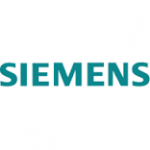
Siemens AG
Siemens is a global leader on the areas of electrification, automation and digitization, being one of the world’s largest producers of energy efficient technologies and systems for power generation and transmission; medical diagnosis; transportation; infrastructure and industry solutions. Several hundred thousand of employees in almost all countries of the world are applying those technologies worldwide. The long term growth is due to the Siemens’ determination to local markets everywhere, applying its universal technologies, split in various divisions. The Energy Management Division is one of the leading global suppliers of products, systems, solutions, and services for electrical power range, especially with the new technologies of renewable and smart grid solutions, as an upgrade of the well-established technologies of transmission and distribution. Siemens’ engineers always strive to develop innovative solutions to cope with the new challenges of energy systems. This includes a growing range of green power, micro grids, smart grid and other. Building Technologies provides safe, energy efficient and environmentally friendly buildings and infrastructure, offering fire protection, security, building automation, heating, ventilation and air conditioning (HVAC) and energy management products and services. Products, solutions and services are optimizing the energy costs, reliability, comfort and performance of buildings and comply ecologically and with sustainability to the international requirements and standards. Siemens is involved also in Project Management, providing wide range of services to their clients. Those include application of own products, solutions and services in partnership projects or as a sole Project Manager. Either in solution provided projects or in key turn ones, Siemens always takes a lead in customers’ needs allocation and strives to provide the best on the market. In order to succeed in projects execution Siemens involves in a very detailed investigation of the technical, contractual, legal and financial requirements, its experienced professionals from local or worldwide offices, with their skills, technical knowledge and credentials globally acquired.

Philips Electronics
Philips Lighting is a global market leader in lighting. It is the world’s largest producer of lighting sources, fixtures, lighting electronics and controls, and light emitting diodes and is recognized expert in the development, manufacturing and application of innovative lighting solutions. The company has activities in almost all countries in the world with offices or with local partnership, with several hundred thousand employees working in factories, design and commercial offices and engineering laboratories. The Energy Management through energy saving solution is always a core in the activities of the company. Its engineers strive to develop innovative solutions to cope with the new challenges of lighting. As once Philips invented energy saving lamp, the label of energy saving can be attached to all its products. The company addresses lighting needs across all market segments: indoor’ lighting solutions for homes, shops, offices, schools, hotels, factories and hospitals; outdoor’ solutions for road, public spaces, residential areas and sports arenas and inspired experiences through architectural projects. Philips Lighting markets the entire lighting value chain – from light sources, luminaries, electronics and controls to full applications and solutions – through the lighting electronics, luminaries, and professional lighting solutions and LED technologies. Philips supports development of laboratories, universities and other knowledge-related entities with technological products, samples and involves many of them in the company’ invention processes. Philips Lighting Design is widely recognized as a leader in people-centric design. The company supplies and supports design companies, teams and individuals with its concepts and solutions, providing market with best technology. The company has distribution and production centers, factories and laboratories all over the world.
Philips Electronics – Click Here

Supreme Group
Supreme Group provides integrated supply chain solutions to defense, government and commercial clients in challenging environments around the globe. The company does partnering for over fifty years, with military and international peace-keeping forces, including the United States Department of Defense and the United Kingdom Ministry of Defense, at home and abroad in active military operations to ensure troops in conflict zones are equipped with the supplies necessary for mission success. Providing total, back to back supply chain solutions to clients, Supreme is renowned as global leader in delivering customized logistics, fuel supply and food supply solutions to defense forces, government agencies, commercial and energy and extractives sector clients. These groups each demand flexibility and rapid response and expect flawless performance every time. Through its broad global network, Supreme Group is uniquely qualified to meet the needs of the energy and extractives sector clients and the services include: procurement services that enable rapid delivery of mission-critical goods, efficiently and economically, in various parts of the world. The company manages fleet over air, land and sea: with several thousand vehicles and trailers on the road; aviation fleet, of scores of fixed and rotary wing aircraft, stationed for rapid deployment across several continents. Supreme has storage facilities strategically located across the several continents, to enable rapid delivery of fuels, foods and dry goods to clients who operate in remote areas. Supreme provides communication technologies in areas that lack existing infrastructure, and designs and provides remote IT platform setup and operational systems to ensure constant connectivity for clients operating in challenging environments, where the need for information is intensified. The company expertise extends to construction, catering, facilities management, retail and hospitality.
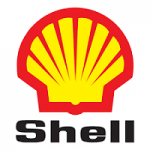
Shell
Shell is a global group of energy and petrochemical companies, with an investment program striving to deliver sustainable growth and provide competitive returns to shareholders. Its work helps the world to meet global energy demand and it is done in a responsible way towards societies and nature. In upstream Shell focuses on exploring new oil and gas reserves and developing major projects where the company’ technology and know-how adds value to the business. In downstream the company operates various assets, on international or local/national level, promoting its brand and generating cash. Shell does refining, supplies, trades and ships crude worldwide, manufactures and markets and retails a range of products, and produces petrochemicals for the industry and transport. Shell operates oil and gas business as an integral part of the supply to global energy needs and for economic development. Together with business target of profitability Shell ensures operations are done in environmentally and socially responsible ways. Shell keeps a high standard of performance, health and safety measures, and treatment of clients, maintaining a strong long-term and growing position in the competitive environments in which operates. Shell aims to work closely with own customers, partners and policymakers to advance more efficient and sustainable use of energy and natural resources. Shell employs around hundred thousand people in scores of countries and territories. Its people are involved in the planning and direction of their own work. Shell creates a productive work environment for its employees and opportunities for carrier development. As energy is vital to human life, over the coming decades the population and living standards for many will rise – and so will the need for energy, Shell has strong position in the world development, with its approach to sustainability – running a safe, efficient, responsible and profitable business. Shell also works to share benefits with the communities where it operates.
Locations
This service is primarily available within the following locations:

Atyrau (Kazakhstan)
The Customs Union evolved into the Eurasian Economic Union in January 2015. During 2014, Kazakhstan’s economy was suffering by Russia’s slowing economy, falling oil prices, and problems at its Kashagan oil field. Kazakhstan devalued its currency. GDP in 2014 was $212 billion, growth rate is 4.3 % in 2014. The major sectors are – agriculture as 4.9 % of total economy – grain, potatoes, vegetables, melons; livestock; industry is 29.5 % – oil, coal, iron ore, manganese, chromite, lead, zinc, copper, titanium, bauxite, gold, silver, phosphates, sulfur, uranium, iron and steel; agricultural machinery, electric motors, construction materials; services take 65.6 %. Labor force is 9.1 mln.; unemployment is 5.2 % in 2012. The prevailing semi desert nature in the region, make the agrarian business very weak. National trade exports: $87.25 bln. – oil and oil products, natural gas, ferrous metals, chemicals, machinery, grain, wool, meat, coal; China 15.9%, Russia 12.1%, Germany 9.5%, France 8.5%, Italy 5.3%, Greece 5.3%, Romania 5%. Trade imports: $47.56 bln. – machinery and equipment, metal products, foodstuffs; Russia 32.2%, China 29%, Germany 5%. Debt: $157 bln. Electricity production is 90.53 bln. kWh; consumption is 80.29 bln. kWh; import 4.25 bln. kWh; export 2.93 bln. kWh; generation capacity is 17.84 GW, with 87.3 % fossil and hydro is 12.7 %. Supply and distribution of electricity sometimes is unstable because of regional dependencies. There are abundant mineral deposits in the country – approximately one-fifth of the world’s uranium reserves; gold- seventh place in the world; copper-fourth; lead, zinc-fourth; aluminum–tenth place in the world; nickel, cobalt-twelfth and seventh places in the world; iron, manganese-sixth; chromium-third in the world; coal-in top ten. Crude production is 1.63 mln. bbl/day, export is 1.36 mln. bbl/day, import is 118 000 bbl/day, reserves 30 bln. bbl. Refined production – 300 000 bbl/day, consumption – 248 000 bbl/day, export 143 000 bbl/day, import 52 000 bbl/day. Gas production is 20 bln. m3, consumption is 15.7 bln. m3, export is 11.2 bln. m3, import is 6.5 bln. m3, reserves are 2.407 trillion m3. Kashagan oil field gives high expectations to local people for prosperity. The investments, reached several billions USD, but several technical problems delayed the start of the extraction. There are large residential complexes for oil workers. There is a pipe factory investment of Chevron and other with related materials. Expectations for long lasting business with the petrol in the region, makes some big company to invest and to build local content production facilities. Around Atyrau there is several gas pump station, Chinese investment, bringing natural gas to China. The local refinery is also property of Chinese company. The airport is well maintained. The city is safe, international banks have offices. Nationalism among locals is not strong and aggressive; most of them sympathize to foreigners. English is rarely spoken. The traffic of the city is not well controlled and in pick hours the moving slows to 5-10 km/hour. The military patrols are visible in many parts of the city. Opportunities are connected to favorable relations with the biggest world power – US, Russia, China, India, Japan, and EU. All of them have big investments and interests in the local economy and Kazakhstan keeps good relations with all. Numerous big energy companies are presented there, Shell, Chevron, Total, BP, NCPOC, Lukoil, Gazprom, to name a few. Threats are mainly connected to the falling prices of oil and commodities, as those are the main contributors to the economy. The country is not affected by terrorism, or other unfavorable international situation. It keeps very strong relations with Russia, but in the same time behaves independently to important world problems. Weaknesses are as following: too much dependence on the carbon business and minerals, whose prices are unstable; in the region of Atyrau the soil is not productive, the climate is difficult and nearest big city is on several hundred kilometers, chances for diversification in near future are weak; the Caspian sea cost is not appropriate for tourism or recreation, due to the inconvenient landscape; the infrastructures in the region need big improvement, especially water supply and road traffic; local engineering capacity is weak. Opportunities are in connection of the expected start of Kashagan pumping, it will bring thousands of jobs in maintenance industry; gradually locals also get jobs in high technology businesses; the President, with national program puts target of developing hydrocarbon independent economy, through investment in infrastructure, especially in railways and tourism attractive places, transport, pharmaceuticals, telecommunications, petrochemicals and food processing; local friendly culture and safe environment will support the development, as this is the way to prosperity; improvement projects for stabilizing the electrical supply. A strategic plan of development of Kazakhstan until 2020 was adopted in 2010.

Kabul (Afghanistan)
Kabul as a political, financial and business center concentrates all business activities, financial flows, offices, etc. Despite the terrorist attacks, it is safer place for business, in comparison with provinces. The country developments affect the business life in Kabul, as government and institutions are there and as major companies head offices are situated there. The sponsors believe that development of infrastructure will support business operations – water, power generation, capacity building, and the transport links to domestic and international markets – roads railways, pipelines. World Bank indicates Afghanistan as the fastest growing economy in South Asia. The major sectors are – agriculture takes around 25 % of total economy – opium, wheat, fruits, nuts; wool, mutton, sheepskins, lambskins; industry is 22 % – production of bricks, textiles, soap, furniture, shoes, fertilizer, clothes, food, juices and mineral water, cement; hand woven carpets; natural gas, coal, copper; services take 53 %. Labor force is 7.5 mln.; unemployment is 30-35 %. Trade exports: $2.8 billion – opium, fruits and nuts, hand woven carpets, wool, cotton, hides and pelts, gems. Pakistan 33.7%, India 23.8%, Tajikistan 8.9%, Russia 5.6%, Bangladesh 5.1%, US 4.1%. Trade imports: $6.4 bln. – Machinery and capital goods, food, textiles, petroleum products, US 31.3%, Pakistan 20.7%, Russia 8.4%, India 5.4%, Germany 4%. Electricity production is close to 1 bln. kWh; consumption is 3.9 bln. kWh; generation capacity is above 0.5 GW, of which 23.5 % fossil, hydro is 76.3%, 0.2% renewable; import coming mainly from northern neighbors, funded by India, ADB, WB, and USAID. Numerous rehabilitation and new construction projects of power plants and grid are going on, financed by banks, donors, states, international organizations. Afghanistan has undeveloped natural resources and deposits estimated at $3 trillion – lithium, copper and gold, iron, lead, zinc and natural gas. Billions are invested in mines, in could support to the country’ economic independence. Chinese and Indian companies mainly bid to develop mineral deposits. Copper mines are the largest investments – China Metallurgical Group & consortium. Gold concessions were given to various international investors and to the local businessman Sadat Naderi, iron – to Steel Authority of India and consortium, together with a mill and a power plant. A Chinese company CNPC explores the Amu Darya oil deposits, with a 25-year contract and plans for refinery construction. Natural gas – production/consumption 160 mln.m3 (2011); reserves estimated to 50 bln.m3. LPG – Ghazanfar holds 70 % of the trade in Afghanistan. Challenges in mine industry are: the longest lead-times, high operating costs, missing water and power generation supportive infrastructure and transport links. Despite the destabilizing factors, the investments process continues, supported by numerous opportunities. Kabul Municipal Development Program ($110 million grant) targets: access to basic municipal services, redesign Municipality’s financial system, and early response to emergency. The Kabul municipality implements the project, that will give benefits to over 700 000 people. Road and sanitation equipment will be installed to combat pollution and improve road services and city environment. Kabul Urban Transport Efficiency Improvement Project ($90.5 million grant), aims to improve the road infrastructure and provision of technical assistance to Kabul Municipality. There are others, targeting the administrative capacity, civil works contracts, implementation of the international construction norms. All those are under supervision and management of foreign specialists, engineers, architects, designers. Foreign investments in electrical network, transport corridors and mining, give chances to local economies. It is not rare case anymore that Afghan companies get projects in important segments of the economy. All this investments, involving local people, give chance to development of the human capacity. A $1 billion project New Kabul City, signed in 2013, is a major residential development of multi-function commercial, historic and cultural complex within the Old City of Kabul. Long discussed projects: TAPI, gas supply from Turkmenistan to India, through Afghanistan; and CASA-1000 a 1,300 MW transmission line(grant of $526.5 million)in Afghanistan, Kyrgyz Republic, Pakistan, and Tajikistan, will support the development of the construction industry, and provide gas and electricity to energy hungry provinces, involving local engineers and increasing the local technological capacity. Those projects create optimism among population, that good development in their country is possible. The threats in the country development are many, as the main one is the local insurgency. There are regions, controlled by insurgents and despite all efforts of the army, supported by NATO troops, the success is not immediate, so providing instability to the whole country and to Kabul, where terrorist attacks are daily. Another threat is the involvement of foreign terrorist organizations, some already well situated in Middle East and some new, looking for ways to be seen. Recently those began fighting each other, bringing more chaos to the situation. Weaknesses of Afghanistan are – corruption and lack of institutional capacity; population consists of several major tribes, who keep own territories; urbanization is very low, that hinders creation of homogeneous society. All those mentioned projects, which are going on, are done mainly by foreign specialists, engineers, architects, by foreign companies. Although many local specialists are gradually involved, it is very insufficient for strong and fast development of a local engineering pool, very much necessary to the country. Strengths of Afghanistan are also numerous – the country practically needs total renovation in each sector, and together with foreign investment, that is supportive to projects. The population accepts development process and participates in it. Thousands of young people study in renowned universities, eager to get personal development, but also to support creation of a future engineering pool. The mining wealth of the country will bring the necessary industrialization to the economy.

Basra (Iraq)
Oil exports remain still high, but the revenue goes steep down, due to the oil prices. The government of Iraq is eager to attract additional foreign investments, but a number of obstacles with security and economic stability and signs of administrative disintegration between 3 main communities, make their task very difficult. GDP of Iraq in 2014 was $221 billion, growth rates recently were 13.9 % in 2012, 6.6 % in 2013 and -2.4 % in 2014. The major sectors are – agriculture as 3.3 % of total economy – wheat, barley, rice, vegetables, dates, cotton; cattle, sheep, poultry; industry is 64.5 % – petroleum, chemicals, textiles, leather, construction materials, food processing, fertilizer, metal processing; services take 32.2 %. Labor force is 9 mln.; unemployment is 16 % in 2012. The prevailing semi desert nature in the region and lack of support, make the agrarian business very weak. National trade exports: $94.5 bln. – crude oil 84%, crude materials, food and live animals; China 23.8%, India 18.4%, US 15.7%, South Korea 7.7%, Greece 5.9%, Italy 4.9%. Trade imports: $62.34 bln. – food, medicine, manufactures; Turkey 23.3%, Syria 17.3%, China 16.6%, US 4.5%. Debt: $58 bln. Electricity production is 62.3 bln. kWh; consumption is 53.41 bln. kWh; import 8.2 bln. kWh; generation capacity is 11.2 GW, with 92 % fossil and hydro is 7.6 %. The grid is very unstable, with frequent black-out, caused frequent public discontent and demonstration is summer time, in Basra. Crude production is 3.4 mln. bbl/day, export is 2.4 mln. bbl/day, reserves 144 bln. bbl. Refines production – 590 000 bbl/day, consumption – 750 000 bbl/day, export 22000 bbl/day, import 242 000 bbl/day. Gas production is 1.18 bln. m3, consumption is 1.18 bln. m3, reserves are 3.158 trillion m3. Basra is a calm region, with very rare terrorist attacks, where the oil extraction and processing are the only possible businesses. The region is covered by poverty, negligence; none maintained infrastructure, dirtiness everywhere, dead animals and rats on the streets or floating in the famous canals and river Shatt-Al-Arab. The electricity is constantly off and on, water from the tap is unhealthy. Another problem is that after the invasion and in the next 13 years hundreds of thousand educated people left Basra, since no business opportunities for them were existing. Public transport does not exist for security reason. As public infrastructure need large investments for rehabilitation or for construction, the authorities started a program involving international organizations and companies. The oil prices slump down put very strong negative impact on the plans. Numerous of the planned development projects of the Governorate have been postponed or stopped. The main opportunity for Iraq is the support from Arabic countries, US, EU, Russia and other, in fighting with ISIS. But obviously this war will continue for a long time and will cause big destruction to the country. Another strong threat is the price of oil, the main budget supporter to the state. Predictions are that it will stay flat, or with slight increase. Iraq doesn’t have another business, which can balance the necessary revenues to the economy. Weaknesses of the country are numerous – widespread corruption, non-maintained infrastructure, insufficient basic services, low skill labor capacity and irrelevant laws. Legislation reform is vital; it must be updated, answering the new realities in the society, in order to support the country development. Unemployment remains high throughout the country despite the subsidized public sector. The signs of disintegration between Kurds, Suni and Shia, must be handled carefully, in order the integrity of Iraq be kept. Strengths are in connection of the geography, the river, the Gulf, with vast opportunities for tourism, as several Biblical and Muslim important places are in close vicinity. Basra has city channels, which can become touristic attractions. The river Shatt-Al-Arab which goes through the city and to the cost of the Persian/ Arabian Gulf is very attractive places for recreation. This will bring visitors from the neighbor countries Iran and Kuwait and all those together will bring prosperity to the population. The river is very attractive transport corridor Turkey – Syria – Iraq – Gulf – Indian Ocean. Encouraging private enterprise would make it easier for Iraqi citizens and foreign investors to start new businesses. The Governorate of Basra must take decision for a modest and constant infrastructure program for development, involving private entrepreneurs. Corruption down and security up, constant infrastructure investment and maintenance, culture and tourism will bring the peace and prosperity to the people.
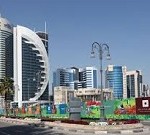
Doha (Qatar)
Qatar is the biggest LNG exporter in the world, supplying to various places around the globe with proved reserves comprise 13% of the world total. Nevertheless the country takes measure to de-carbonize the economy. Gas production is 158.5 bln. m3, consumption is 32.93 bln. m3, export is 125.5 bln. m3, import is 6.5 bln. m3, reserves are 25.07 trillion m3. GDP in 2014 was $210 billion; growth rate in sequential years was 6 % in 2012, 6.3 % in 2013, 6.1 % in 2014. The major sectors are –industry takes 68 % of total economy – liquefied natural gas, crude oil production and refining, ammonia, fertilizers, petrochemicals, steel reinforcing bars, cement, commercial ship repair; services are at 31.9 %; agriculture has only 0.1 % – fruits, vegetables; poultry, dairy products, beef and fish. The desert nature in the region, make the agrarian business impossible. Labor force is 1.5 mln.; unemployment is 0.4 % in 2014. National trade exports: $121 bln. – liquefied natural gas (LNG), petroleum products, fertilizers, steel; Japan 25.3%, South Korea 18.8%, India 12.7%, China 7.7%, Singapore 6.2%, UAE 5.1%. Trade imports: $39.12 bln. – machinery and transport equipment, food, chemicals; US 11.5%, China 10.6%, UAE 8.2%, Germany 7.1%, Japan 6.4%, UK 5.5%, Italy 4.9%, Saudi Arabia 4.6%. Debt: $158 bln. Electricity production is 32.7 bln. kWh, all internally consumed; generation capacity is 8 GW, with 98.5 % fossil and renewable is 1.5 %. The harsh climate makes people stay mostly indoor, putting a strong burden on cooling facilities, respectively on an electrical power production. Air-conditioning is working day and night, consuming tremendous portion of the energy produced. All new technologies in efficient and energy saving lighting are applied. Crude production is 1.54 mln. bbl/day, export is 1.232 mln. bbl/day, import is 118 000 bbl/day, reserves 25.24 bln. bbl. Refined production – 311 000 bbl/day, consumption – 230 000 bbl/day, export 554 000 bbl/day. The cost of fuel is very low and does not support saving performance from drivers. In the same the weak public transport makes the private cars and taxis the only option for transportation. Strong construction activities are going on all around the country and in Doha – malls, roads, villas, recreational places, artificial landscape. Two entirely new cities are in construction – Lusail and Al Waab, giving rise to heavy transport, sea shipments and flow of new foreign workers. Qatar’s hosting of FIFA 2022 World Cup is accelerating large-scale infrastructure projects such as Qatar’s metro system, light rail system, a new port, roads, stadiums and related sporting infrastructure, those change the vision of Doha. The city streets are full with heavy trucks, noise and traffic jams are intensifying. Numerous international construction and consultant companies are presented there, attracted by the plans of Qatar and also by the favorable legislation, as the US, UK and EU norms are respected. Qatar is planning also to become a health hub of the Arabic peninsula and rehabilitation of old hospitals or new construction takes place. Opportunities in the outside environment are in connection of: the stable demand in the world market for LNG; stable political relations with other Arabic countries, EU and US and trade relations with China, Japan, South Korea and India; good image of the country. Threats are related to: the steep fall of the oil & gas prices worldwide; new discoveries with gas, which increase competition; development of new technologies, which make non-traditional resources cheaper than traditional ones; political one, related to the ongoing wars in Syria and Iraq, which destabilizing Middle East; terrorism, spread out in all Arabic world and Africa, making a wide region unsafe, etc. The main weakness of Qatar is too much dependence on the oil & gas business and export. The steps taken for de-carbonizing the economy are not giving quick results in that direction. Also too much dependence on the foreign workforce, as it is at the moment, makes the country vulnerable to external factors. Local population shall gradually take over common working activities in private companies, instead of relying on the jobs in public offices only. Strengths are numerous: big national wealth; strong construction changing the structure of the economy and the vision of the country; all new technologies are applied in new construction; developed public facilities, rule of law; international codes are applied in construction – US, UK and EU; the willingness of local authorities to build a modern state, with the best infrastructure and healthcare and other services; common understanding that de-carbonizing the economy is the best future of the economy; the developments would make Qatar as an attractive touristic destination.

Sofia (Bulgaria)
In the past, the main industry sectors of Bulgaria were metallurgy, machine manufacture, automotive, chemicals, and agriculture. Recently, however, the priority has shifted to energy, tourism, transportation, IT and telecommunications, food and beverage, pharmaceuticals, and textile and clothing and continued development in automotive industry. Sofia being an institutional, financial, cultural and political center of the country gets big parts of investments, directly or through its role in support to other regions. GDP of Bulgaria in 2014 was $55.84 billion, growth rates recently were 0.5% in 2012 and 1.7% in 2014. The major sectors are – agriculture as 5 % of total economy – vegetables, fruits, tobacco, wine, wheat, barley, sunflowers, sugar beets; livestock; industry is 31 % – electricity, gas, water; food, beverages, tobacco; machinery and equipment, base metals, chemicals, coke, refined petroleum, nuclear fuel; services take 64 %. Labor force is 3 mln.; unemployment is 11.5 % in 2014. The Biggest part of employment is in touristic services. Bulgaria is in top ten touristic destinations, with sea resorts, mountains ski resorts, natural eco-tourism, cultural tourism and others. The capital Sofia, situated very close to internationally appreciated winter resorts and high mountains, but also being old cultural and historical center, takes a big share of this industry. Sofia also is a place of strong international investments in IT services, bringing the unemployment to lowest level in the country, especially among young generation. National trade exports: $30 bln. – clothing, footwear, iron and steel, machinery and equipment, fuels; Germany 12.3%, Italy 9.1%, Turkey 8.9%, Romania 8.1%, Greece 6.8%, France 4.4%, Belgium 4.2%. Trade imports: $34 bln. – machinery and equipment, metals and ores, chemicals and plastics, fuels, minerals, and raw materials; Russia 14.5%, Germany 12.4%, Italy 7.2%, Romania 6.9%, Turkey 5.6%, Greece 5.2%, Spain 5%. Debt: $50 bln. Foreign investments: $3 bln. annually. Electricity production is 47 bln. kWh; consumption is 29 bln. kWh; generation capacity is 13 GW, with 46 % fossil, nuclear is 15.5 %, hydro is 21 % and 17.5 % renewable. The grid is stable, but the National Electrical Company, the operator of the transmission grid is in big loss. Bulgaria is net exporter of electrical power to neighbor countries. Crude production 1000 bbl/day, import 128 000 bbl/day, reserves 15 mln bbl. Refines production – 139 000 bbl/day, consumption – 89 000 bbl/day, export 86 000 bbl/day, import 37 000 bbl/day. Bulgaria is net exporter of refined oil products. Gas production is 278 mln. m3, consumption is 3 bln. m3, reserves are 5.663 bln. m3. Most of the universities, state entities and commercial companies are situated in Sofia. The public transport is well developed. The road and transport networks are under strong development, high ways and interconnection terminals are under construction, financed by EU funds. The main opportunity for Bulgaria is the EU membership, which brings stability, reforms, financing and vast market for Bulgarian goods. Despite the recent Greek, Ukrainian, emigrant’ crises, Bulgaria is stable, supported by other member states. Good chances for development give also the old relations with Russia, Central Asia and Arabic countries, traditionally strong consumer of Bulgarian production. The trade with US shows growing trend. Threats are rather high. Being a last border of EU, to Middle East, Bulgaria is exposed to instability, not caused by emigrants only, but also by the terrorism. Turkey, its important neighbor, is experiencing instability injected by the war in Syria and by the internal insurgency. Russia, an old and big trade and cultural partner of Bulgaria, is becoming a center of unpredictable processes. Another neighbor, Greece is in long lasting economic and political crisis. Weaknesses are visible to the society, the main one is the missing legislative reforms. The legislation bodies are not transparent, their decisions many times are doubtful and the society consider them corrupt and unreliable. Bulgaria is still ranked in high level of corruption. Several times EU stopped financing any program, due to lack of transparency or proved corruption. Another weak point is the human capacity, caused by the fact that hundreds of thousands of young or medium age educated people left the country to find their jobs abroad, in UK, Germany, Spain, US.
Achievements

Construction
I had various positions in construction industry: in contractor and sub-contractor company; in consultancy and design; in project supplying and after-sales services; in maintenance, in regions under European legislation, and others under US codes and British standard, and Russian standards. I managed or consulted national and international development projects and programs towards cohesion with European and other International legislation, with importance for the development of several countries and regions.

Energy
I had positions in several parts of Energy industry: in oil & gas downstream; in electrical renewable generation; electrical distribution in various entities – industrial, public buildings, city streets, hotels; and maintenance, in regions mainly under European legislation, but also such with US and UK codes, and Russian standards. As a part of the worldwide trend of development of C02 free energy, I managed a project in wind park generation, building energy saving projects, street lighting projects, city traffic control, etc., those changed positively many environments and lives. My experience helps me to recognize the importance of the energy projects to the societies, in countries where the people lack very basic energy resources, and services and how any improvement activity is well accepted.

Utilities
I managed several businesses in Utilities: electrical renewable generation; utilities’ design; electrical distribution; municipality district heating. As a part of the worldwide trend of development of C02 free energy, I managed a project in wind park generation, encountering various issues of renewable implementation – high feed-in tariff; intermittent of the generation; unstable legislation. In my project with renovation of power supply system to district heating utility company, the improvement provided very good results to the entire system of the city. I was responsible for the design of new Utilities and networks of a big city – electrical and telecommunication ones, and electrical machine part of the water, district heating and sewage ones.

Oil & Gas
In my activities, related to Oil & Gas industry, I did several projects – in midstream and downstream and in providing technical equipment. I managed part of the supply chain of jet fuel supply to armies in Afghanistan through Central Asia North distribution network, by investigating the existing corridors of transportation and ways for improvement with potential new suppliers, Russian and Central Asian refineries and suppliers. In technology I had projects with equipment for gas pumps supply, to national gas distribution network in Bulgaria, Siemens technology.

Consultancy
I managed or consulted national and international development projects and programs towards cohesion with European and other International legislation, with importance for the development of several countries and regions. I provided technological, normative and operational consultancy to state authorities, universities and private entities for content and implementation of the new norms, positively influencing the business and social life, concerning projects in building and city traffic technologies.
Personal Profile
Mr Chicles is an approved Certified Learning Provider (CLP) at Appleton Greene who is a business leader and strategist with broad experience in the global multi-industrial, aerospace and defense sectors. He is a seasoned operational leader of global industrial businesses, leading transformational strategies in highly competitive markets.
As a senior, C-suite strategist for multiple major industrial corporations he has led multiple mergers, acquisitions, divestitures and restructurings, as well as corporate break-ups and spin-offs. He has a distinguished track record of successful transformations of complex organizations in dynamic and uncertain market conditions while engendering the trust and buy-in of employees, customers, vendors, owners, corporate leadership and boards of directors.
A highly engaged leader at the personal and team level he has demonstrated the ability to engender effective senior teams and boards. He’s also an active mentor, teacher and community leader.
Mr Chicles is an active board member with AES Seals, global leader in sustainable reliability engineering, and Micro Technologies Inc, an electronics and advanced manufacturing company. He is a principal partner with ProOrbis Enterprises®, a management science consultancy with premier clients such as the US Navy and PwC, as well as the principal of Xiphos Associates™, a management and M&A advisory. Recently, he served as Board Director and Chairman of Global Business Development with Hydro Inc. the largest independent pump and flow systems engineering services provider in the world.
He was President of ITT’s Industrial Process / Goulds Pumps business segment a global manufacturer of industrial pumps, valves, monitoring and control systems, and aftermarket services for numerous industries with $1.2 billion in revenue, 3,500 employees and 34 facilities in 17 countries. Preceding this role he served as Executive Vice President of ITT Corporation overseeing the creation of a newly conceived ITT Inc. following the break-up of the former ITT Corporation to establish its strategy and corporate functions such as HR, communications, IT and M&A, building the capabilities, policies and organizations for each.
He joined ITT Corporation’s executive committee as its strategy chief in 2006 and instituted disciplined strategic planning processes and developed robust acquisition pipelines to respond to rapidly changing markets. Created successful spin-offs of 2 new public corporations Exelis Inc. and Xylem Inc. ITT Corporation was named one of “America’s Most Respected Corporations” by Forbes for exemplary management and performance during his tenure there.
Before joining ITT, Mr Chicles served as Vice President of Corporate Business Development and head of mergers and acquisitions for American Standard / Trane Companies, where he initiated and closed numerous transactions and equity restructurings globally.
Additionally, he created and led the corporate real estate function which entailed more than 275 real estate transactions around the world.
He began his career at Owens Corning rising through the ranks in various operational roles to Vice President of Corporate Development.
Recently, he taught advanced enterprise strategy at Stevens Institute of Technology as an adjunct professor and still supports start-ups through the Stevens Venture Center. He continues to be active as the Founding Board Member with several successful start-up technology businesses and non-profit organizations. A community leader, Mr Chicles has held the role of President of the Greek Orthodox Cathedral in Tenafly, N.J., He also led trips abroad to Cambodia and Costa Rica to build sustainable clean-water solutions and affordable housing.
His formal education includes earning a Masters of Business Administration from The Wharton School at the University of Pennsylvania, and a Bachelors in Finance from Miami University.
(CLP) Programs
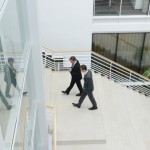
Appleton Greene corporate training programs are all process-driven. They are used as vehicles to implement tangible business processes within clients’ organizations, together with training, support and facilitation during the use of these processes. Corporate training programs are therefore implemented over a sustainable period of time, that is to say, between 1 year (incorporating 12 monthly workshops), and 4 years (incorporating 48 monthly workshops). Your program information guide will specify how long each program takes to complete. Each monthly workshop takes 6 hours to implement and can be undertaken either on the client’s premises, an Appleton Greene serviced office, or online via the internet. This enables clients to implement each part of their business process, before moving onto the next stage of the program and enables employees to plan their study time around their current work commitments. The result is far greater program benefit, over a more sustainable period of time and a significantly improved return on investment.

Appleton Greene uses standard and bespoke corporate training programs as vessels to transfer business process improvement knowledge into the heart of our clients’ organizations. Each individual program focuses upon the implementation of a specific business process, which enables clients to easily quantify their return on investment. There are hundreds of established Appleton Greene corporate training products now available to clients within customer services, e-business, finance, globalization, human resources, information technology, legal, management, marketing and production. It does not matter whether a client’s employees are located within one office, or an unlimited number of international offices, we can still bring them together to learn and implement specific business processes collectively. Our approach to global localization enables us to provide clients with a truly international service with that all important personal touch. Appleton Greene corporate training programs can be provided virtually or locally and they are all unique in that they individually focus upon a specific business function. All (CLP) programs are implemented over a sustainable period of time, usually between 1-4 years, incorporating 12-48 monthly workshops and professional support is consistently provided during this time by qualified learning providers and where appropriate, by Accredited Consultants.
Executive summary

Acquisitive Growth
In today’s context of changing markets, technologies and business models, and in conjunction with historic levels of available capital, acquisitive growth has emerged as an increasingly compelling approach to transformational growth. However, as has been empirically proven growth through acquisitions is fraught with pitfalls and inherently risky. Successfully acquisitive growth requires the confluence of many factors that go beyond the traditional phased steps of a typical process. In my experience success is a function of bringing together the elements of people, processes, and technologies into a set of capabilities that are custom-made for an organization’s particular strengths, circumstances and aspirations. Winning in today’s dynamic markets demands bold, unique and sustainable strategies. The following are the stages of such an approach that I have found to create high probability, profitable growth that stands the test of time.
Additionally, while the M&A industry has many advisors available, they tend not to be operating executives who have lived through all the elements I will lay out below. Many simplistic guidelines exist, however what its clear is that the difference between success and failure with acquisitive growth is not in rote adherence to some set of processes, rather it is found in the combination of process discipline and strong application of experiential, practical knowhow. The nature of this knowhow is to apply and allocate the elements below in a smart, efficient manner to achieve exemplary outcomes for the specific client’s unique situation and circumstances.
Strategy Development: Whether at the corporate level or in a specific business unit, clients would be taken through steps to clarify the markets and segments where they currently compete and where they want to go in the future, what differentiates them from competition, where capabilities need to be refined or built, and the various functional elements (e.g. systems, processes, structures, etc.) critical to sustain profitable growth. Approach would be a combination of review of current strategies/capabilities, interviews and facilitated discussions and structured workshops. Outcomes might be a strategy to bring a particular business into a new growth phase or to meet changing competitive environments, or at the enterprise level might entail “platform building” whereby new businesses, sectors or legs are build from the ground up through foundational initial acquisitions and subsequent organic and inorganic initiatives.
Market Focus: Where will we hunt for acquisition targets? If a company allows too-wide of a scope will find themselves suffering from expensive resource drains/distractions and/or dilute efforts. Therefore, following the alignment of enterprise/business strategies the process will seek to focus the market segments and the business criteria to qualify a company to be elevated to possible target.
Research Possible Targets: Simply put, take the descriptions and criteria from above and create lists of potential targets that might fit. Each such company is researched for available information, any currently available knowledge the client might have, etc. Output is a gross list of possible targets.
Target Approach: Utilizing a number of possible approaches, one that is appropriate for the client is determined. For example, some companies may have business development or sales teams who could participate in this stage, or on the other hand for reasons such as confidentiality, resource scarcity, etc this might need to be put into the hands of specific individuals (senior executives, dedicated M&A executives, 3rd party services, etc.). Each company is different, so this is an exercise of matching needs with capabilities. The objective is to screen the gross target list to elminate those who have “killer facts” such as big contingent liabilities, prohibitive complexity such as a company with a complex ownership structure, our any other aspects that renders a target not acceptable for the next step.
Cultivation: This is a very critical part of the overall process. The essence of this authentic, genuine and meaningful relationship-buidling which requires a combination of individuals with certain skill-sets to ‘sell’ the prospects on being acquired, patience and persistence. I have many approaches, processes and techniques that I have and continue to use to great effect in this regard. Output is a short list of interested targets who have moved to active discussions and in-person meetings.
Target Assessment: During the cultivation phase as it gets more advanced, a critical success factor for effective acquisitive growth is the ability to narrow the list with limited amounts of information. This is important because the next phase is quite intensive so any company can not practically thoroughly assess all such targets. In other words, how does a client gain the insights needed to do this? Some might consider this the ‘phase I due diligence’ whereby, prior to the engagement of expensive resources such as lawyers, accountants, etc., an overview of a target’s current status is determined. Through structured and open discussions, the client engages in discussions with the targets to learn as much as possible..
Preliminary Offer: Structuring of a term sheet or letter of intent based on finding to date. Depending on these findings, certain terms may be included to lay out a) value expectations; b) focus for due diligences and commitment to support it; and c) various legal terms typical for these agreements. This tend to be non-binding agreements meant to establish exclusivity of dealings for a period of time, high level terms that both parties agree to, and confidentiality. Given my background, I have the abilility to craft these documents with minimal legal cost.
Due Diligence: This is yet another element of acquisitions that can take several different forms. Depending on the situation and capabilities of both clients and targets, due diligence activites tend to have different scopes and approaches that match each particular circumstance. A simple example would be a private company target versus a public company. With the latter, sellers often limit potential acquirers to only publicly available information whereas private companies may have limited information at their disposal. Therefore, each approach must be designed for purpose, with the output being a customized plan for a particular target. This leads to both more efficient and cost effective processes as well as deeper insights to help with final decisions.
Deal Making: After the due diligence phase, and with a set of terms already agreed, the negotiations begin to finalized the terms of value, liabilities and the myriad legal and busses considerations that must be addressed and finalized. Whether as chief negotiator or as a trusted advisor to the same, I would bring my experience and talent to bear on this phase as well as some structured approaches/guidelines.
Integration Planning: Concurrent with the commencement of due diligence, full attention is required to determine the structure, resources, plans and teams for post-closing integration. Specific approaches and processes would be employed here to ensure that a proper integration leader is named (critical), robust but prioritized integration plans (e.g. IT and Finance integration might be a first priority for some companies), organizational and assimilation plans, and specific actions in several other area. Among the more difficult and critical elements of integration is culture. While culture is a key consideration in the pre-offer phases, it tends to be among the more challenging aspects to successful acquisitions and an area where experience from a career of hands-on accountability of acquisitions brings valuable insights. Several pro-active approaches can be introduced to the clients to determine which is best to employ with any particular integration.
Execution: From plans to execution requires much more than a roadmap. While such roadmaps are critical, it is the confluence of leadership and human capital, prioritized focused actions to achieve specific results, and finally sustainable integration to bring into the client’s company the full potential of the value creation possible. Tools exist and can be created to provide structure and management support to achieve this consistently.

Important And Strategic Elements Of A Growth By Acquisition Approach
This program has thus far concentrated on the role that acquisition strategies play in driving growth.
However, this assumes that the acquisitions are carried out properly on its own. Experience has shown that acquisitions may both produce and destroy value, with the execution of the transaction typically making the difference.
The following are crucial and strategic elements that support successful acquisitions:
• Considering strategic fit: Purchasing merely for the sake of purchasing is little more than management hubris. The target businesses should in some manner meet the needs of the buyer’s company strategy (i.e. product or service line, geographic reach, etc.).
• Addressing culture fit: Due to cultural mismatches between the two merging organizations, some of the largest mergers in history have failed. It is important to take into account a company’s culture because it directly affects how it creates value.
• Doing thorough due diligence: This guarantees that the buyer “looks beneath the hood” of the company they are buying and that the price they are looking to pay for the company reflects its intrinsic value.
• Integration: Even when the share purchase agreement’s ink dries, the deal is not finalized. The two businesses must now start an integration process to ensure that they grow into something greater than the sum of their individual parts.

Advantages Of Growth Acquisition
10 advantages of expanding your company through acquisition
If you’re deciding whether to enter into an acquisition contract, you might wish to take into account the following list of acquisition benefits:
1. Strengthens a failing business
The company you work for might be going through a period of underperformance, and an acquisition might be the answer. The ability to work together as a team rather than alone may be a key factor in the business’ success. As you get to share resources with the company you’re merging with, this can assist keep the business from failing.
2. Secure financing for growth
By making an acquisition, a company might gain access to money or other important assets that it might not otherwise have at its disposal. You can easily acquire these assets with the aid of an acquisition. The firm and its employees may benefit from collaborating with a company that has sufficient resources because the development of the enterprise is the ultimate objective.
3. Have access to skilled personnel of high caliber
An acquisition can aid in boosting both the amount and quality of employees who are knowledgeable about the demands of the company. The experienced staff often stays on the firm payroll after an acquisition is completed so they can integrate. Their business acumen contributes to the companies’ success after the merger.
4. Expand the company’s market.
The corporation may diversify its offerings of goods and services as a result of the acquisition. You can make a variety of goods and distribute them to various target consumers. An acquisition often aids in a company’s development and growth.
5. Increase market influence
When you enter a new market, making an acquisition might help you combine market forces and exercise control. The synergy it offers increases your market presence and market share. If you plan to establish branches or subsidiary businesses, an acquisition may assist you lessen competition and preserve market dominance.
6. Make sure more capital is available.
Because the company is now larger after an acquisition, access to cash is improved. Higher cash and funds are available and accessible as a result of the arrangement. Amountable capital may be extended to both companies according on the agreement the companies come to when making the purchase.
7. A decrease in training expenses
Through an acquisition, your company may be able to cut internal training costs by using resources from the other acquired company. The cost of employee training is not necessary if the acquired firm develops its resources. You can use the company’s resources, depending on their state of development, to train other employees so they can develop their skill set.
8. Boost the competitiveness of your business
A purchase can take care of the requirement to adhere to higher standards as a result of the development in technical advancements. By joining forces with a smaller company that possesses the required technologies, a larger corporation can maintain its competitive position. Long-term gains from this may accrue to both businesses.
9. Lower production expenses
If you can use another company’s production facilities, facilities, and storage space, merging with them can save your production expenses. Building these kinds of facilities can be expensive, but if the business expands, it might be necessary. Sharing resources could significantly affect the budget and production costs.
10. Enable you to fulfill stakeholder expectations
Stakeholders could have expectations for the company’s growth, and making an acquisition is an effective strategy to achieve such expectations. An purchase increases the likelihood of investment returns, which may gratify the stakeholders. The pressure from the stakeholders can be handled more easily by making an acquisition, and you can even surpass their expectations.

What To Watch Out For During The Entire Acquisition Growth Process
Investigating less evident problems within the target company is the goal of the due diligence procedure.
This ranges from contracts with sizable clients that are about to expire to potential legal proceedings resulting from past business decisions.
But there are a few things that the buyer should watch out for on a more strategic level.
They consist of the following:
• Culture: Even if this phrase keeps coming up, it is crucial to the success of M&As. The culture of the target company should be thoroughly researched by prospective buyers in order to have a sense of what they are getting into.
• Competitive Edge: Is the target company “plain vanilla” or does it engage in any activities that offer it a competitive advantage (which we’ll define as the capacity to produce above-market value over the long term)?
• Leadership: Would the target company’s leadership complement your own leadership team in a positive way? Spend some time with them while conducting your research to see whether this might be the case.
• Possibilities: Are there any prospects that the target firm can take advantage of that your business won’t be able to in the near future? Let’s say it’s because of a service or product line they offer that is expected to see rapid expansion.
• Synergies: Where do your two companies’ synergies lie? Are they really complementary, or does purchasing the target company actually run the danger of causing some of your company’s income streams to be cannibalized?
Program Objectives
The following list represents the Key Program Objectives (KPO) for the Appleton Greene Acquisitive Growth corporate training program.
Acquisitive Growth – Part 1- Year 1
- Part 1 Month 1 Business Assessment – Assessments can be incredibly valuable tools for organizations of all sizes. A comprehensive assessment methodology can help you evaluate your organization across multiple dimensions. But what are business assessments, what do they entail, and what are the benefits? Business assessments can help you identify areas of improvement and potential acquisitive growth. By taking a comprehensive approach, you can get an accurate picture of your organization’s strengths and weaknesses. Assessments can also help you develop actionable plans to improve your business. At their core, business assessments are all about providing clarity. When you’re feeling overwhelmed by the day-to-day details of running a business, it can be difficult to step back and get a clear picture of where your company is headed. That’s where assessments come in. By taking a comprehensive look at your company’s strengths and weaknesses, you can develop a clear road map for success. Assessments are an essential part of any business plan. By evaluating your company’s strengths and weaknesses, you can develop a roadmap for growth. Furthermore, assessments can help identify areas where your company may be at risk. By addressing these risks early on, you can avoid potential problems down the road. In addition, assessments can help you benchmark your company’s performance against others in your industry. This benchmarking process can give you valuable insights into areas where your company may need to improve. Ultimately, regular business assessments are a crucial tool for any organization that is looking to grow and thrive.
- Part 1 Month 2 Strategic Aspiration – A Winning Aspiration defines the purpose of your enterprise, its guiding mission and aspiration, in strategic terms. The first choice of the strategic choice cascade is winning aspirations. Here we ask, “what is our winning aspiration.” Strategically, our winning aspiration defines our purpose. Aspirations are a view of the future. Qualified with “winning,” it is the ideal future that we strive to achieve. Unless you deliberately set out to win, it is impossible to do so. A business that only wants to participate rather than succeed will invariably fall short of making the difficult decisions and large investments necessary to succeed. Aspirations that are too modest rather than lofty are much more harmful. Most businesses fail because they have low expectations.
- Part 1 Month 3 Segment Focus – Every company aspires to grow. But, in a market where competition is fierce, inorganic business growth requires insight and innovation. Segmenting the market and customers is among the most effective techniques to promote acquisitive growth. Yet as numerous businesses have shown, artful segmentation can result in a significant competitive advantage. The purpose of segmentation is to inform your marketing approach. Using this method, it is feasible to recognize and categorize groups of potential clients based on their shared preferences, needs, and interests. This method effectively identifies the demographics most likely to value a specific good or service you provide. Furthermore, it may assist you in positioning that service so that it outperforms that of your rivals.
- Part 1 Month 4 Targeted Offerings – Everything the market offers, be it products or services or any experience, is known as a market offering. Market offerings are also divided among themselves based on the nature of the offering. Read along to understand the role and value of market offerings. Individuals within a market have different wants and needs. As a result, businesses in the market offer various products and services. The ultimate aim of businesses is to fulfill all the varying wants and needs of the population. Providing better target offerings and standing out in the market will eventually lead to more loyal customers and a broader customer base. People expect businesses to add value to their lives in various ways, precisely the purpose of market offerings – satisfying customer needs.
- Part 1 Month 5 Target Pool – The purpose of this workshop is to map out the offerings that one wants to develop or enhance for the focus segments defined by WDP3. A target pool is at the intersection of Targeted Offerings and Focused Segments. For example, if your strategy is focused on growing a currently manufactured product beyond your existing markets, you’ll want to know all the players who make these products in the markets where you don’t currently play but aspire to. In this simple case, the target pool would be derived by researching the current suppliers in these focus segments and profiling them for certain things such as size, channels to market, etc. The approach of this workshop is to take the Targeted Offerings and in a way and ‘map’ them with the Segment Focus areas we developed previously. In reality you might only need to do one or few of these approaches, but the workshop can develop the understanding and skills to do this work, which is in essence synthesizing the ‘strategic play’ associated with any acquisitive growth program.
- Part 1 Month 6 Target Identification – Target identification in acquisitive growth is the process of identifying potential companies or assets that align with the strategic objectives of the acquiring company. It involves conducting comprehensive research, market analysis, and due diligence to evaluate various factors such as financial performance, growth potential, synergies, industry trends, competitive landscape, and cultural fit. The goal is to identify targets that offer strategic value and can contribute to the acquirer’s growth, profitability, market position, or diversification objectives. This process requires careful evaluation, consideration of risks, and alignment with the acquiring company’s overall M&A strategy to ensure successful integration and value creation.
- Part 1 Month 7 Target Approach – All business investors are “financial” investors – the real question is how “strategic” is their ability to leverage the assets of the target. Providing practical guidance on approaching a business target and conducting initial due diligence depends on the investor’s criterion, competencies, and execution bandwidth. At this point, you will have identified a target or group of targets and you are attempting to learn enough about the target to determine whether to proceed with developing a meaningful indication of interest. Of course, an active seller is likely prepared for the sale process and represented by an advisor who is postured to provide the financial and operating information necessary for investors to quickly determine the suitability of a deal (i.e., a pitchbook and defined protocols for communication and information access). However, many desirable targets may not be seeking a sale because business conditions are favorable, and their businesses have been managed to provide options to the owners regarding continued independence and turn-key ownership and management succession. If the former, you, as a prospective buyer may have already pinged on the radar of the seller, and if the later, you have mined for target opportunities and are ready for the next step to accomplish an acquisition.
- Part 1 Month 8 Deal Approach – The M&A landscape is becoming increasingly competitive and the balance of power is shifting further in favour of buyers. For attractive businesses, however, sellers may wish to make divestments through an auction process which is designed to elicit competitive bidding among interested parties to facilitate the sale of a business or stake in a company at the highest price and on the best possible terms. Not all transactions require collaboration between the buyer and the seller, however. In many instances, an auction is still a better approach than a negotiation. The trick is in knowing which process to use when. To make that choice, you need to clearly understand your potential buyers, the characteristics of the asset in question, your own priorities, and the relative importance of speed and transparency to obtaining the best price.
- Part 1 Month 9 Cultivation – (non-auction)
- Part 1 Month 10 Cultivation – (organized process)
- Part 1 Month 11 Confirm Target – Assuming initial contact and conversations go well, the acquirer asks the target company to provide substantial information (current financials, etc.) that will enable the acquirer to further evaluate the target, both as a business on its own and as a suitable acquisition target. After producing several valuation models of the target company, the acquirer should have sufficient information to enable it to construct a reasonable offer; Once the initial offer has been presented, the two companies can negotiate terms in more detail.
- Part 1 Month 12 Talent Assessment – Talent decisions can be made with less precision, discipline, and data but frequently require more complexity than other integration decisions (such as decisions about goods, markets, or customers). M&A leaders must “up their game” in talent assessment if they want to succeed. In the end, the acquirer must decide if current employees from the target (the acquired company) are the most qualified to carry out the goals of the new organization.
Acquisitive Growth – Part 2- Year 2
- Part 2 Month 1 Talent Strategy – There are numerous tactics available for talent acquisition. But not every organization benefits from every method or strategy. When developing your strategy, consider the following factors: industry, size, development trajectory, types of positions, leadership, and more.
- Part 2 Month 2 Integration Strategy – The process of integrating a buyer and seller to the extent required to realize the anticipated benefits from a merger or acquisition is known as an M&A integration. An M&A integration plan outlines the merger’s goals, top priorities, performance indicators, non-negotiables, and scope.Getting agreement among your leaders on the integration strategy is the first stage in an M&A integration. At least two to three months before the deal closes, they should make it clear.
- Part 2 Month 3 Business Plan – Lack of a business strategy before an acquisition is one of the main mistakes that many M&A practitioners make. When considering an M&A, the business strategy is a vital resource. It provides comfort to those funding the deal that the reasoning behind it is sound and that the decision to acquire is not being made on a whim, as well as a roadmap for what you’re looking for in a business acquisition.
- Part 2 Month 4 First 90-Day Plan – HR must be quick and efficient when acquisition is at the core of a company’s growth strategy. The first 90 days are crucial for the organisation’s long-term performance as well as for the retention of individual employees. We can win hearts and minds by day 90 and have a better probability of them becoming productive team members if we have a robust acquisition plan.
- Part 2 Month 5 Valuation – One of the biggest challenges in negotiating a business acquisition is typically price haggling. The intricacy of business valuation makes this more challenging because a fair value cannot be determined without thoroughly examining the company’s financial data, sales trends, customer and supplier base, and many other factors.
- Part 2 Month 6 Synergy Analysis – A significant driver of value in M&A transactions is the potential for establishing synergies. A synergy is the idea that two businesses might be valued more highly when united than when valued separately. Knowing the possible synergies in an M&A transaction is crucial to any agreement, for both the buyer and the seller.
- Part 2 Month 7 Due Diligence (Foundational – Foundational due diligence is an organization’s baseline due diligence requirements that they must have on file for every vendor relationship, regardless of risk level, in order to do business with them. With origins in the private-sector world of business and finance, the term “due diligence” refers to the process through which an investor (or funder) researches an organization’s financial and organizational health to guide an investment (or grantmaking) decision. The decision to fund or not to fund is based upon a balance of objective data analysis, insight into the general state of organizational health and stability, and intuition. A sound and thorough due diligence review is the process through which all the factors that make up that equation are uncovered and understood. It is the process in which a program officer seeks the “truth” about an organization. Foundation program officers are faced with multiple challenges in assessing whether to recommend a grant to their board or decision-making committee. First, they must ascertain whether and to what extent the proposed activity coincides with the foundation’s guidelines and priorities. Next, they must assess the worth of the proposed activity itself — does it advance the fi eld, provide needed services or generate new learning? If the proposal survives this initial scrutiny, it must then be weighed for its relative merits beside many other worthy proposals. This process requires a great deal of skill and sensitivity. Due diligence protects a foundation’s investments and reputation and advances its mission and overall strategy.
- Part 2 Month 8 Due Diligence (Business Plan) – When you receive a proposal on your desk, the first step of proposal review is generally a consideration of the alignment of the applicant organization and proposed project with your foundation’s guidelines and interests. If this initial review is positive, due diligence typically commences with broad research and information gathering to provide a good understanding of the organization, how it fits into the field and the way in which this project will advance your foundation’s strategy. You might also contact colleagues for their view of the organization and its work. Then, you move on to get to know the applicant on a deeper level, including interviews with some combination of the executive director, board chair, other board members and staff members key to the proposed project. Each of these activities is covered in depth in this tool.
- Part 2 Month 9 Deal-Making (Direct Negotiation) – Direct negotiations are a deal making process in which an agency may contact a single contractor of its choice to submit a quote or tender without having first gone through a genuine competitive process.
A variation to an existing contract can also be a direct negotiation. Bargaining between buyer and contractor is a critical element of the process. The objective is to reach agreement on all terms and conditions and to obtain the goods and services at a price that is fair and reasonable to both the contractor and the agency. Direct negotiations are not intended to avoid competition or to discriminate against any organization and must be conducted in a manner consistent with the standards of behavior and requirements. A suitable assessment, based on comprehensive knowledge gained through specific market research, will need to be made to justify direct negotiation. - Part 2 Month 10 Deal-Making (Auctions) – Many (if not most) complex deals between buyers and sellers—from home sales to purchasing auctions to corporate mergers—qualify as auction deal making. Deal making (auctions) give sellers the opportunity to avoid making the difficult tradeoffs of traditional negotiations or auctions— competition versus value creation, for example, or many versus few bidders. In fact, sellers can take the best of both worlds— negotiations and auctions—to ensure they get a great deal. Auction deals have the following features: 1. One-on-one negotiations. At some stage of the deal making process, the seller engages one or more buyers in private discussions about the asset on the table. 2. One or more rounds of bidding. The seller also pits potential buyers against one another in an auction. 3. Several, but not too many, potential buyers. Deal making at auctions need enough parties to spark an auction but not so many that one-on-one negotiation would be difficult for the seller to manage. 4. Process ambiguity. In a traditional auction, the seller determines the process (whether there will be a single round of bidding or multiple rounds, for instance), and buyers are passive participants. In auction deal making, by contrast, the process is up for grabs. Buyers can try to shape the process to their advantage, as in the case of an auction contestant who approaches a seller about negotiating privately to move beyond the single issue of price. In general, whether you are the process setter or a bidder in an auction that has features of a negotiation, don’t assume that the rules are set in stone. Instead, change the game by thinking about how you can influence the rules, parties, and assets to your advantage.
- Part 2 Month 11 Documentation – The paperwork phase of a merger or acquisition is crucial. It might be regarded as the merger and acquisition process’s soul. With due diligence complete, parties make the final decisions on moving forward to execute the transaction. For legal teams, this comes with several responsibilities. Corporate or pre-clearance filings must be made in advance of the closing date. These include merger filings, amendments, ordering of good standings, or issuance of bring-down letters.
- Part 2 Month 12 Communications – An increase in M&A activity indicates a potential deal for entrepreneurs, business owners, and C-suite executives. In the event that a tempting deal is successful, it would be advisable to view an employee communication plan as a crucial component.
Methodology

Acquisitive Growth
It’s challenging to make this kind of acquisition successful. Seven fundamental operating principles are used by profitable corporate and financial purchasers, according to research. Almost all phases of the acquisition process, from the selection of candidates through post-merger management, are impacted by these ideas.
• Insist on cutting-edge operating tactics.
• If you can’t identify the leader, don’t make the deal.
• Provide top executives with significant incentives.
• Connect pay to variations in cash flow.
• Accelerate the rate of change.
• Encourage lively interactions between the board, managers, and owners.
• Employ the top acquirers.

Insist On Cutting-Edge Operating Tactics
High-profile leveraged buyouts like those of Duracell International, Uniroyal, and RJR Nabisco have garnered a lot of attention since the early 1980s. Prices, clever financial arrangements, and bargaining strategies have received a lot of attention. However, the other 2,200+ buyouts that took place during that time period and the fundamental changes in operational procedures that led to profitable outcomes for many of those businesses have received little attention. Although many observers think that LBO enterprises find hidden treasures in the market, more often than not, they only concentrate on enhancing operations.
Two acquisitions, Sunglass Hut International and Snapple Beverage Corporation, show that operating performance—rather than financial leverage, market timing, or industry selection—is the main driver of value creation in successful acquisitions.
Desai Capital focused on accelerating sales growth and developed a new strategy to achieve so when it acquired Sunglass Hut. By acquiring smaller stores in turn and introducing a new store model, Sunglass Hut has expanded from 150 locations to more than 800 since the initial acquisition in 1988. This growth has led to an astounding 37% yearly return. The business introduced a broad product selection rather than depending on two or three popular lines, replaced clerks with limited knowledge of sunglasses with educated customer-service specialists, and implemented a low-cost regional approach.
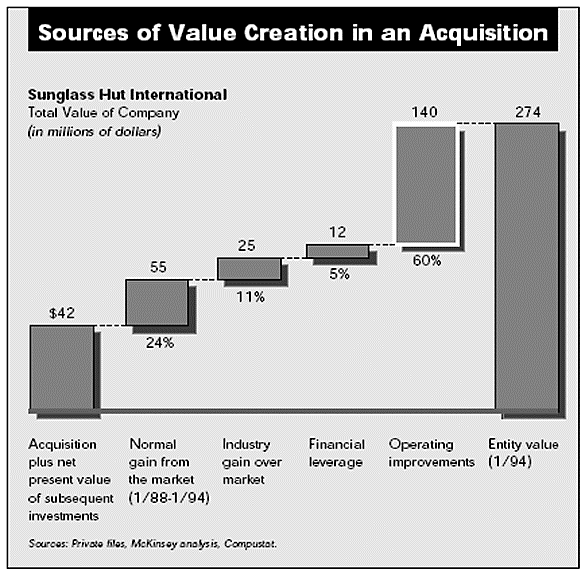
Another illustration of operating improvements is the 1992 purchase of Snapple by renowned financial acquirer Thomas H. Lee Company. Snapple launched an aggressive growth strategy based on quick global expansion and product range extensions shortly after the takeover. The business immediately established its production and distribution network since it anticipated that rivals will soon release their own natural teas and fruit juices. It entered into contractual agreements with bottling and distribution businesses that had excess production capacity, allowing it to launch its product one year before major rivals like Fruitopia (from the Minute Maid division of Coca-Cola Company) and achieve a competitive advantage.
As the Snapple case demonstrates, innovative operating methods help acquirers succeed in fiercely competitive markets like the American food and beverage sector. The takeaway: Don’t limit your search for success to high-growing industries.